Creating an inviting and functional small front yard requires thoughtful use of space, materials, and plant selections. From incorporating container gardens and vertical greenery to choosing drought-tolerant native plants and integrated lighting, these 20 ideas will help you maximize curb appeal while keeping maintenance manageable. You’ll discover techniques like using edge pavers to define groundcover, adding small water features, layering texture with clumping grasses and hostas, and selecting dwarf trees and shrubs that won’t overwhelm compact spaces. Budget-friendly tips such as replacing grass with mulch or rock beds, DIY planters, and patterned tiles can transform your entryway into a welcoming statement. Whether you favor a minimalist look or a lush cottage aesthetic, these strategies offer inspiration for every style and climate.
1. Container Gardens
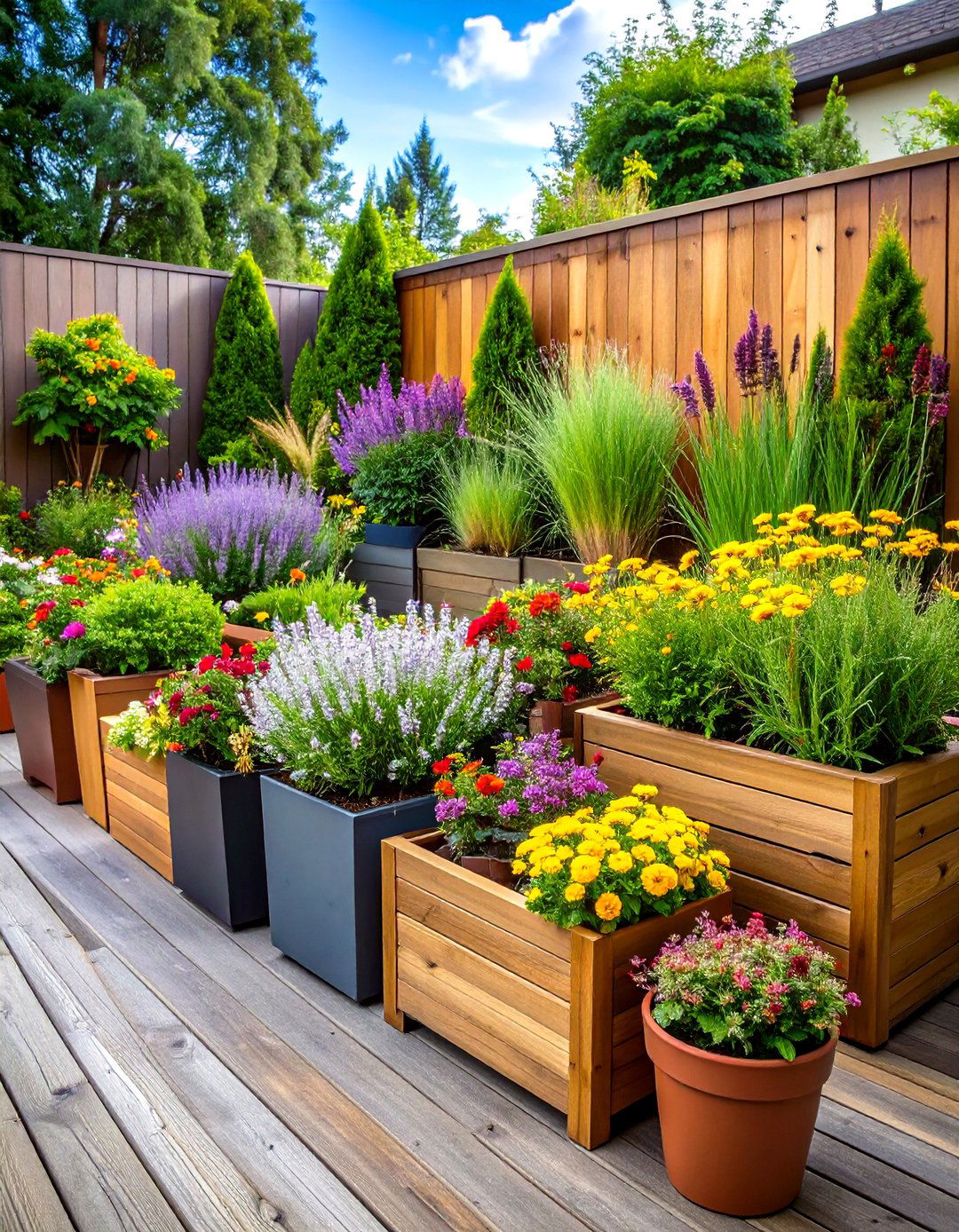
Container gardens allow for flexible design changes and seasonal updates. By grouping various pots with flowering annuals, evergreens, and ornamental grasses, you can create focal points and soften hardscape elements without committing to permanent beds. Containers also help manage soil quality and moisture levels, which is ideal for small yards where soil conditions vary. Arranging containers at different heights—on pedestals, steps, or stacked trays—adds depth and visual interest.
2. Drought-Tolerant Native Plants
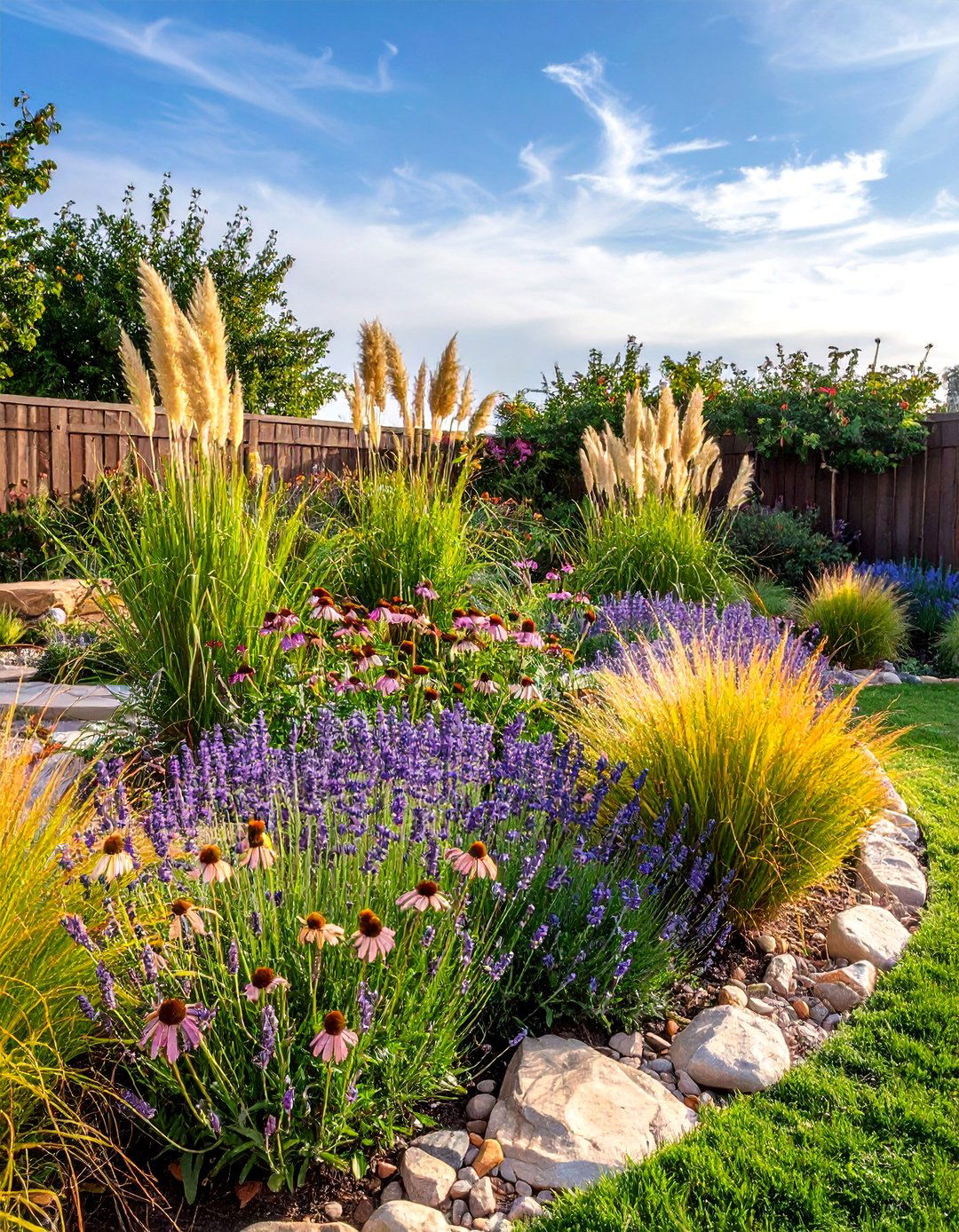
Choosing native, drought-tolerant plants ensures low water use and supports local ecosystems. Species like ornamental grasses, coneflowers, and lavender thrive in local climates with minimal irrigation once established. Native plantings reduce maintenance, as these varieties resist pests and diseases naturally adapted to your region. Integrating native perennials creates a sustainable landscape that blooms year after year without heavy upkeep.
3. Edge Pavers with Groundcover
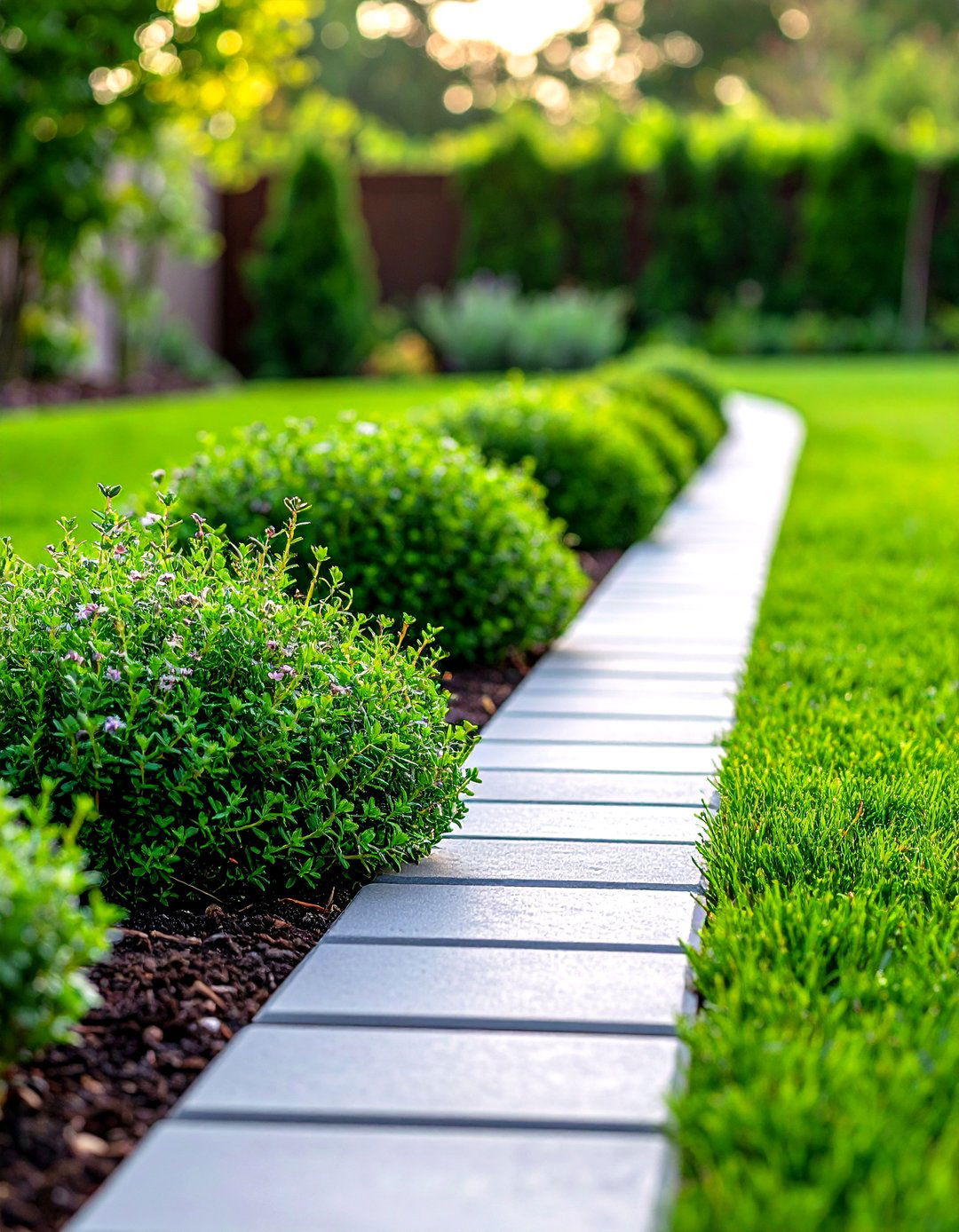
Installing narrow paver borders between lawns and planting beds not only defines spaces but also prevents grass and weeds from encroaching into garden areas. Low-growing groundcovers such as creeping thyme or Irish moss soften the edges and fill gaps, creating a tidy, seamless transition. This approach is both functional—helping with weed control—and aesthetic, providing a polished, professional look.
4. Small Water Features
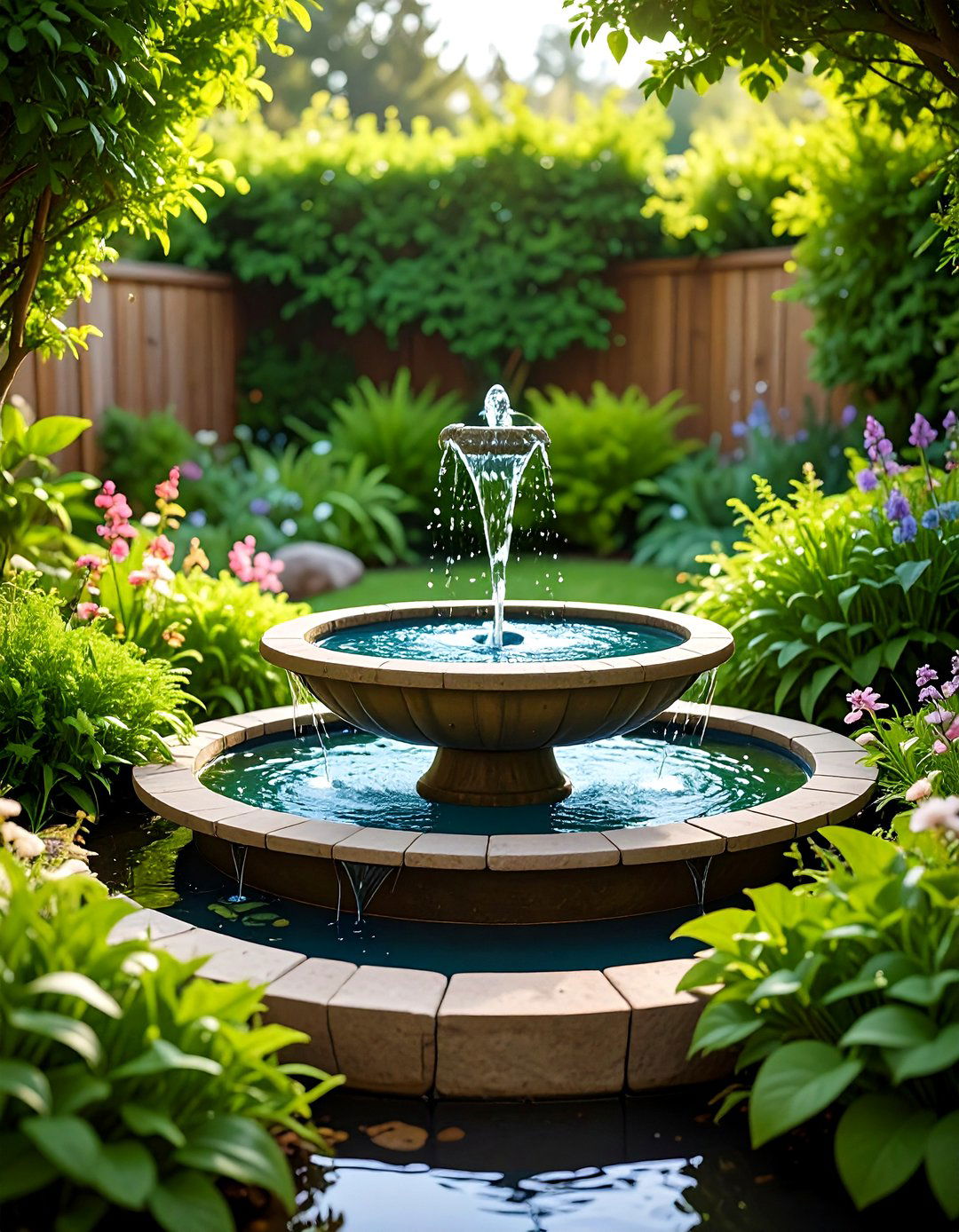
Incorporating a petite fountain, bird bath, or bubbling urn brings soothing sound and movement to your front yard. Water features don’t have to be large; tabletop fountains or solar-powered bird baths can fit on a patio or beside a walkway. The gentle trickle of water creates a tranquil ambiance, attracts birds, and elevates the sensory experience of your landscape.
5. Dense Pathway Planting
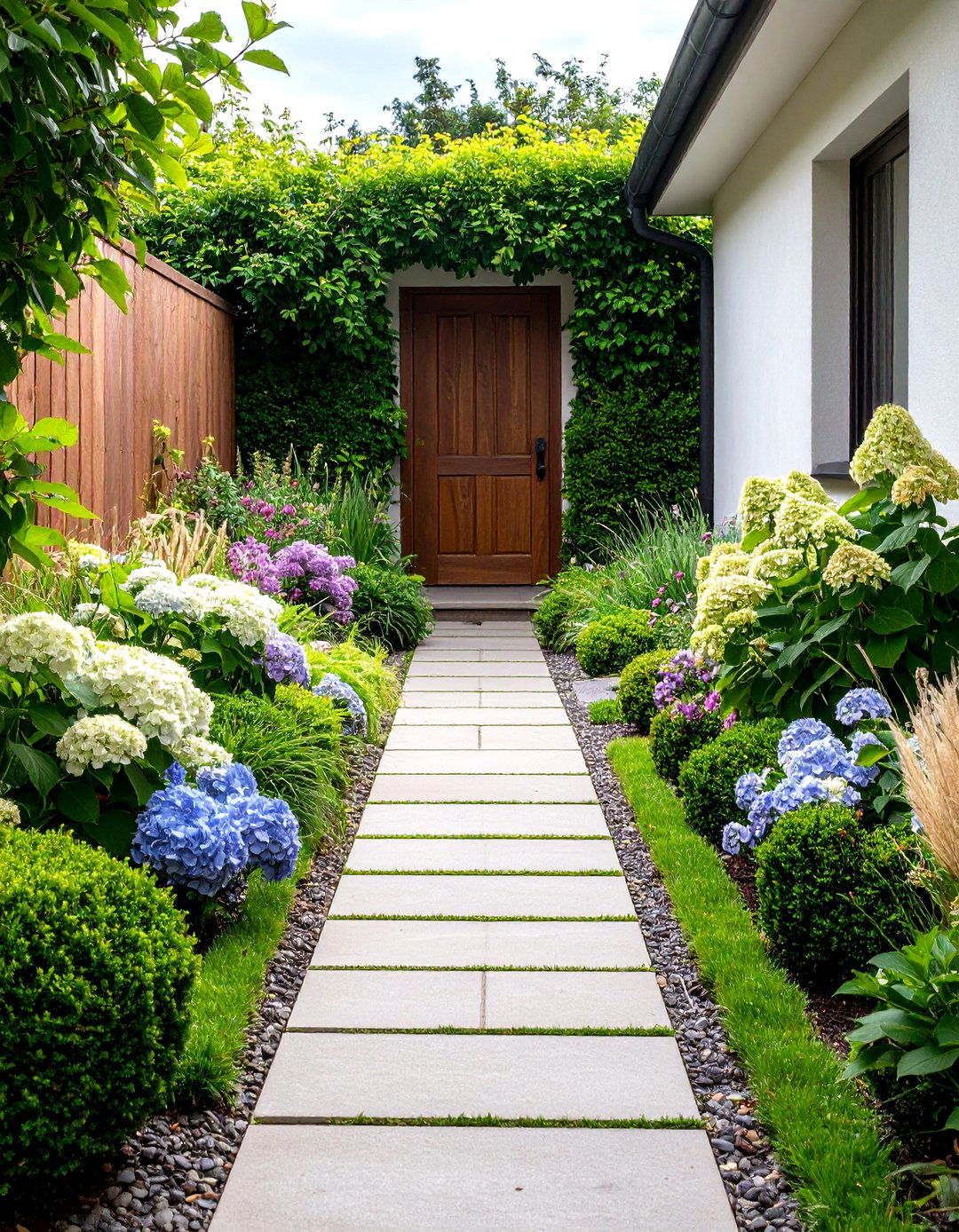
Lining walkways with tightly planted shrubs, perennials, and ornamental grasses enhances the sense of arrival while making narrow paths feel intimate. Varieties like dwarf boxwood, panicle hydrangeas, or feather reed grass provide structure and color without overwhelming the space. This “garden-edged” path design leads guests through a living corridor of foliage and blooms.
6. Retaining Walls on Slopes
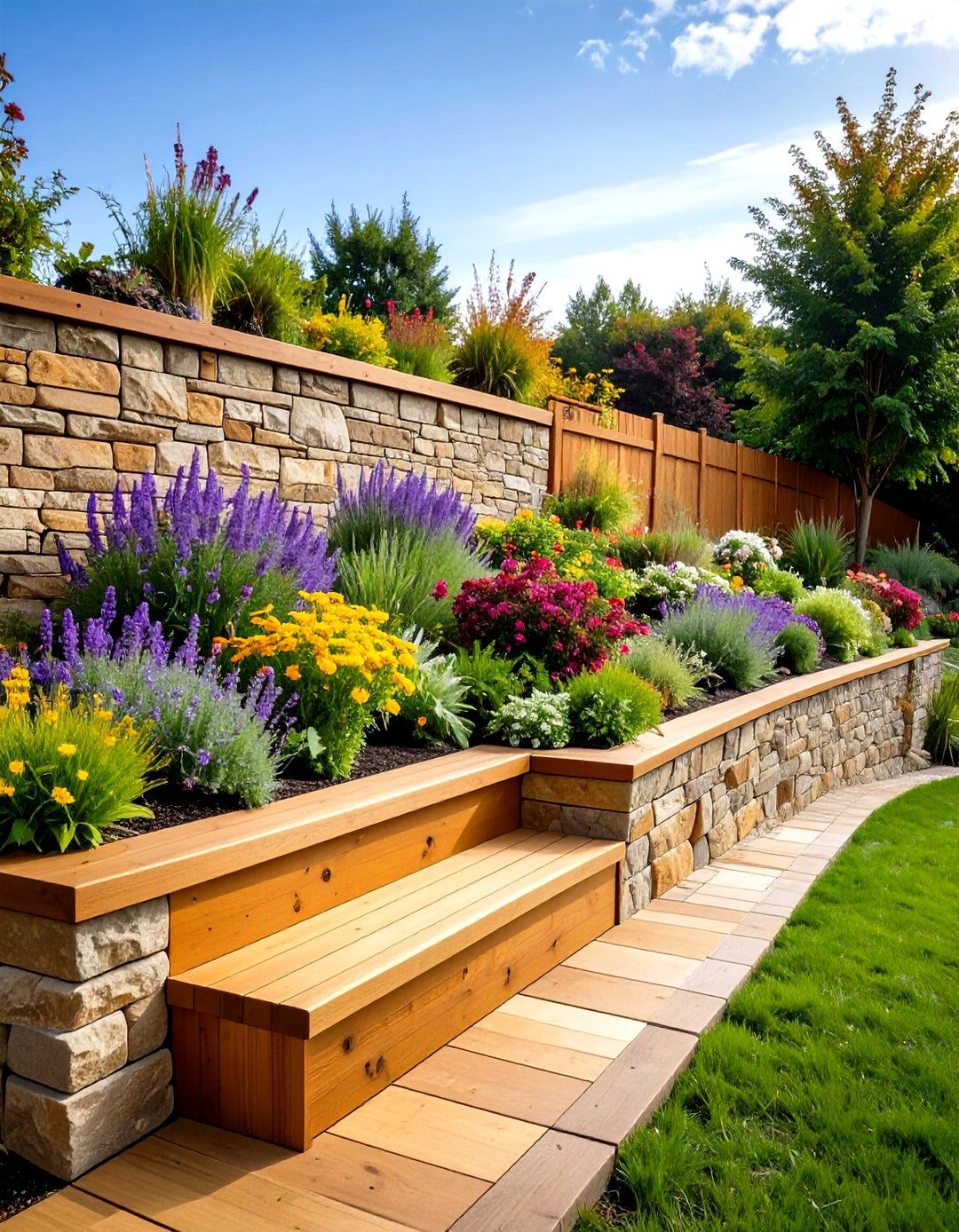
For yards with elevation changes, low stone or timber retaining walls create level planting terraces and prevent erosion. Walls can double as seating ledges or bases for raised beds, optimizing vertical space. Materials such as stacked stone, concrete blocks, or railroad ties can suit different budgets while adding architectural interest to a compact yard.
7. Climbing Vines on Trellises
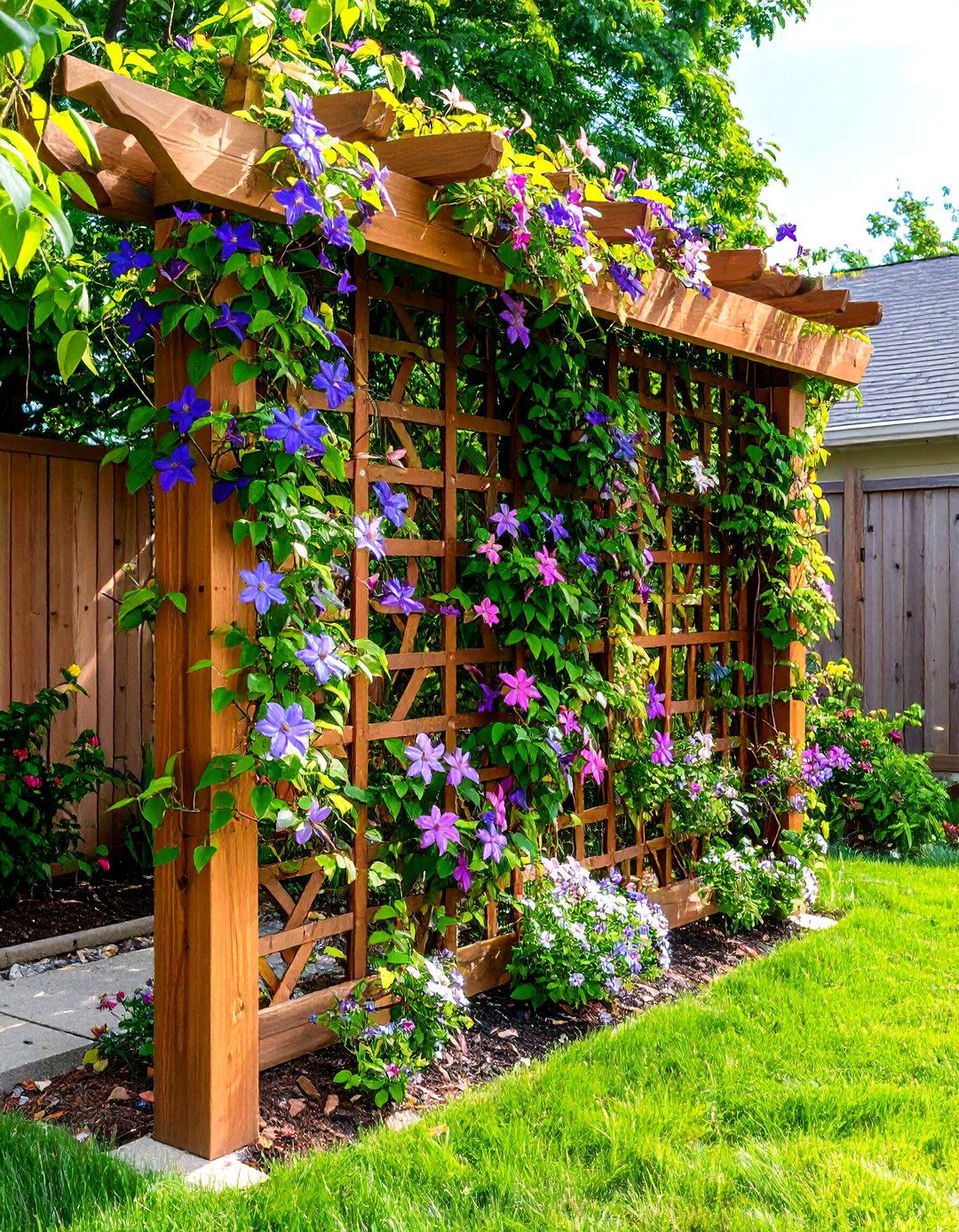
Use trellises, arbors, or a wire grid to support flowering vines like clematis, jasmine, or climbing roses. Vertical growth draws the eye upward, saving ground space and adding lush greenery to walls or fences. Vines soften hard surfaces and can frame entryways or create a living screen for privacy.
8. Privacy Hedges and Screens
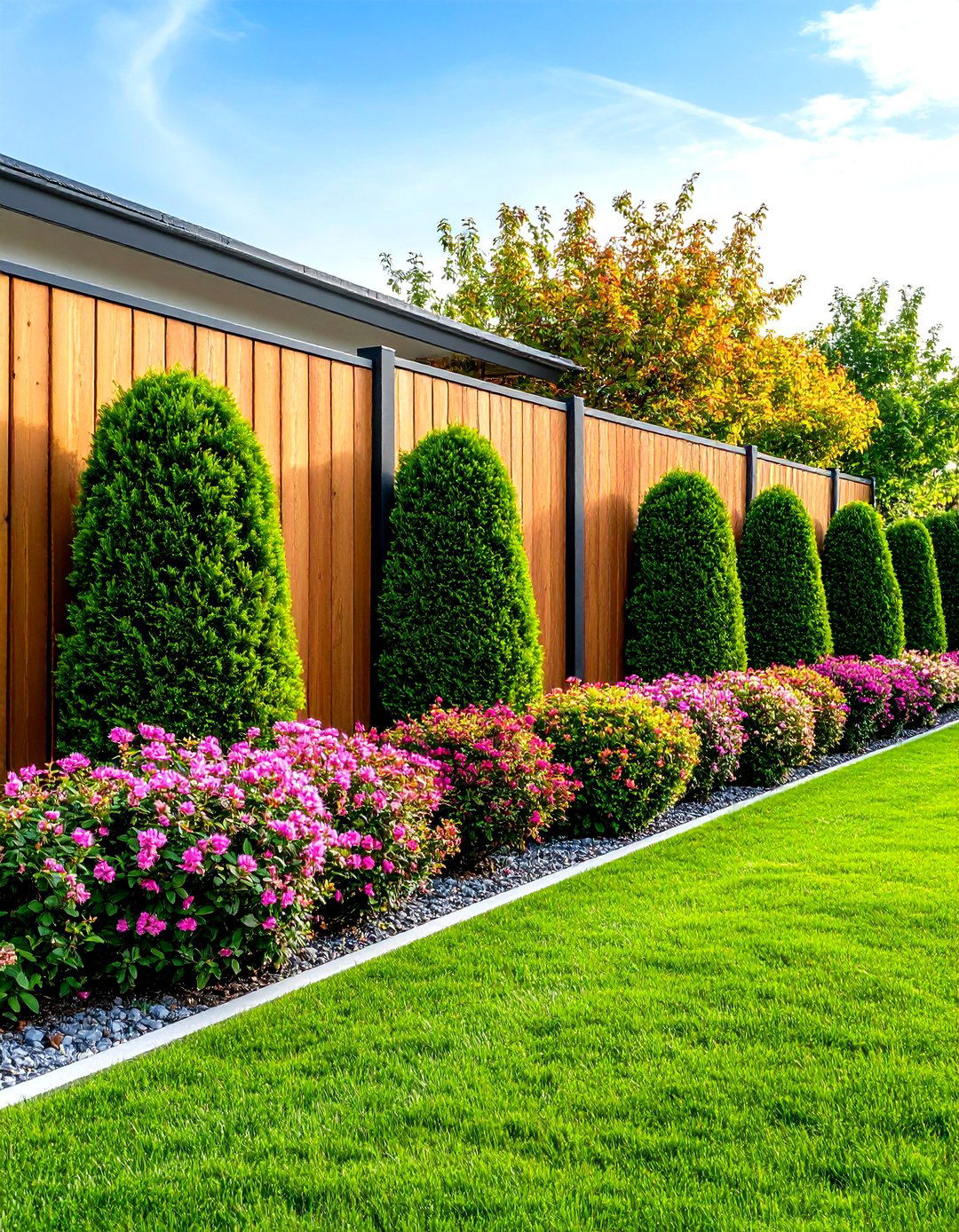
Plant evergreen hedges—such as dwarf holly or boxwood—or install ornamental screen panels to define property lines and provide seclusion. In small yards, narrow varieties keep pathways clear while offering year-round structure. Combining hedges with flowering shrubs adds seasonal interest and fragrance.
9. Minimalist Rock and Mulch Beds
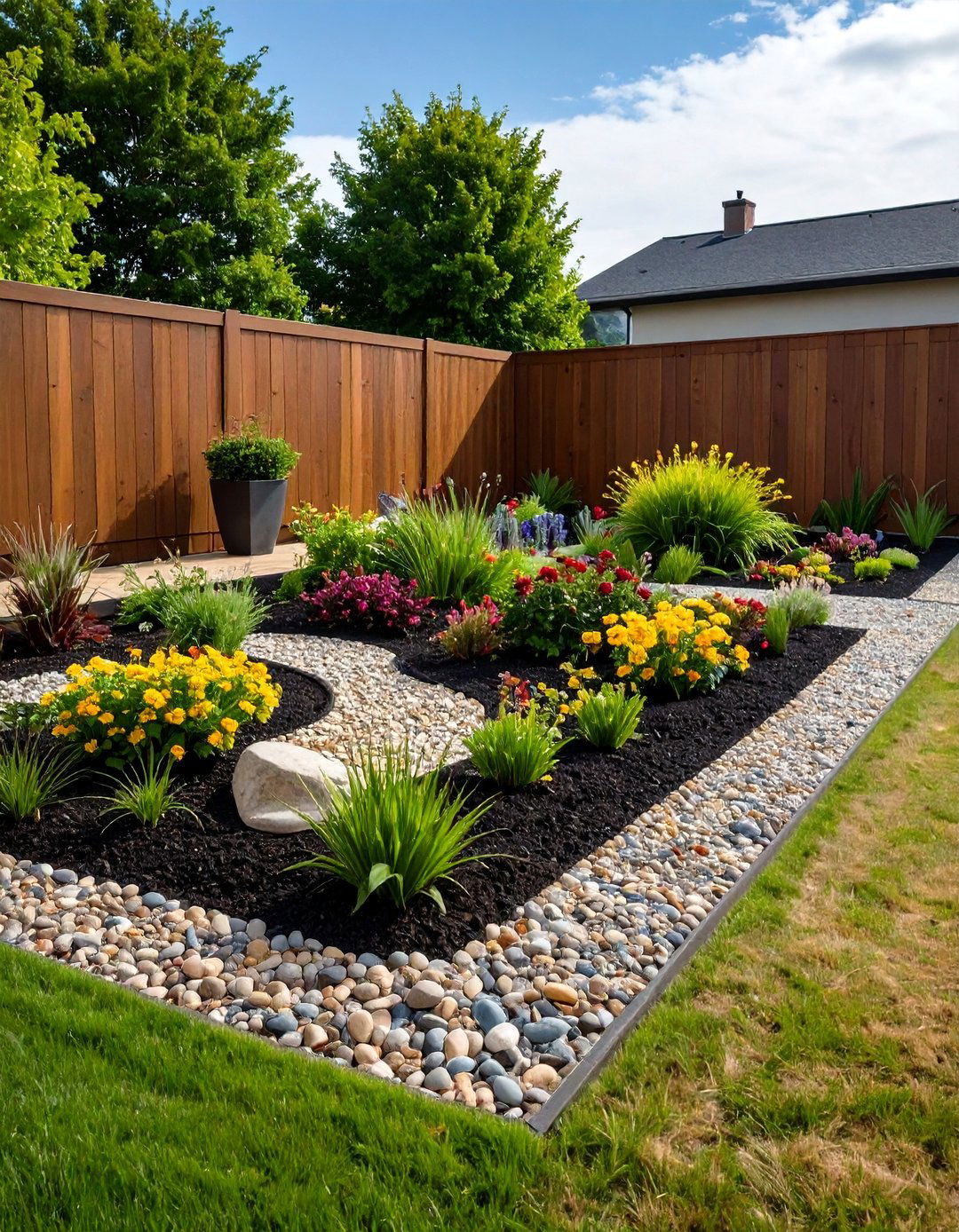
Replace high-maintenance lawns with decorative rock, gravel, or mulch beds. Use larger boulders or river stones as focal points and smaller pebbles to fill gaps. Mulch made from bark or wood chips introduces warmth while suppressing weeds. Minimalist beds require little watering and create a clean, contemporary aesthetic.
10. Cozy Seating Nook

Add a small bench, bistro set, or built-in ledge to create a welcoming spot near your front door. A seating area invites neighbors to chat and encourages you to enjoy your yard. Pair seating with potted plants or a small side table to make the space functional and stylish.
11. Vertical Living Walls
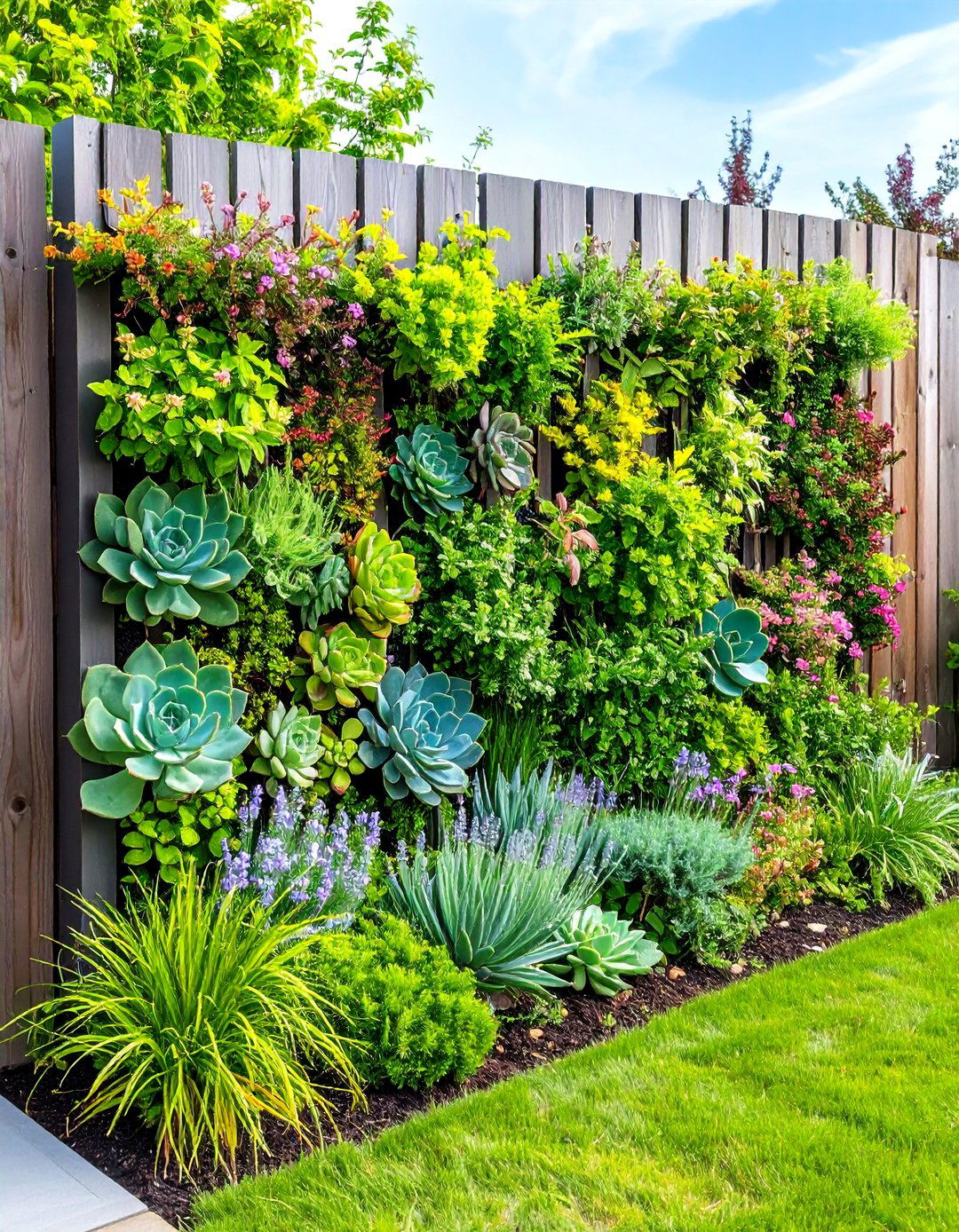
Prefabricated living wall panels or DIY planters mounted on fences can hold succulents, herbs, or annuals in a vertical arrangement. These green walls maximize planting area and create a lush backdrop in the tightest spaces. They’re particularly effective for growing edible greens or extending seasonal color upward.
12. Integrated Landscape Lighting

Install low-voltage spotlights, pathway lights, or solar-powered fixtures to illuminate plants, pathways, and architectural details after dark. Lighting enhances safety and extends the usability of your front yard into the evening. Placing small fixtures within shrub beds or beneath lowhanging branches creates depth and drama.
13. Xeriscaping with Succulents
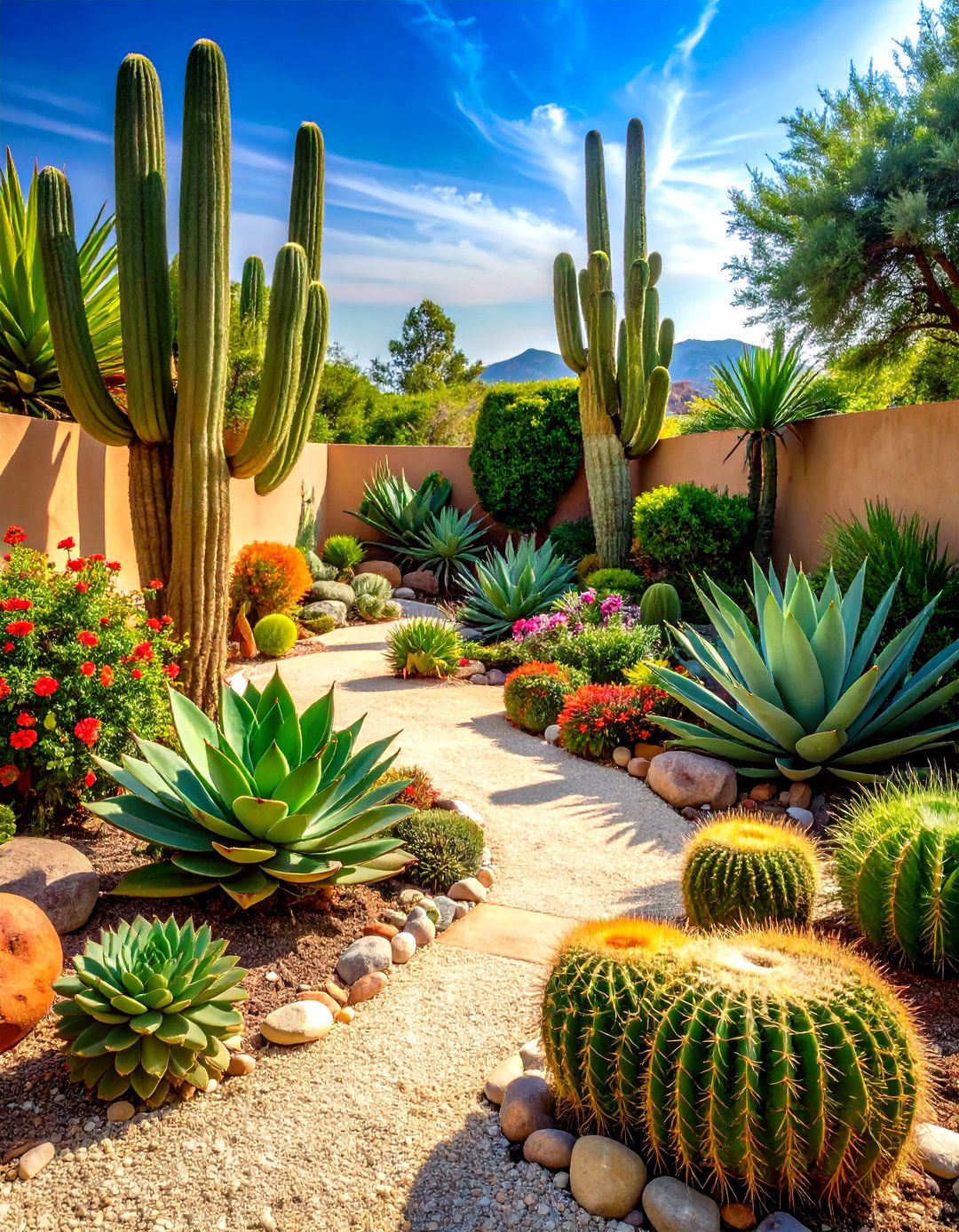
For arid climates, xeriscaping replaces thirsty plants with succulents, cacti, and gravel beds. Group succulents like agave, sedum, and echeveria in shallow beds or containers. Incorporate decorative stones and decomposed granite for a low-water, low-maintenance landscape that still feels lush.
14. Dwarf Trees and Shrubs
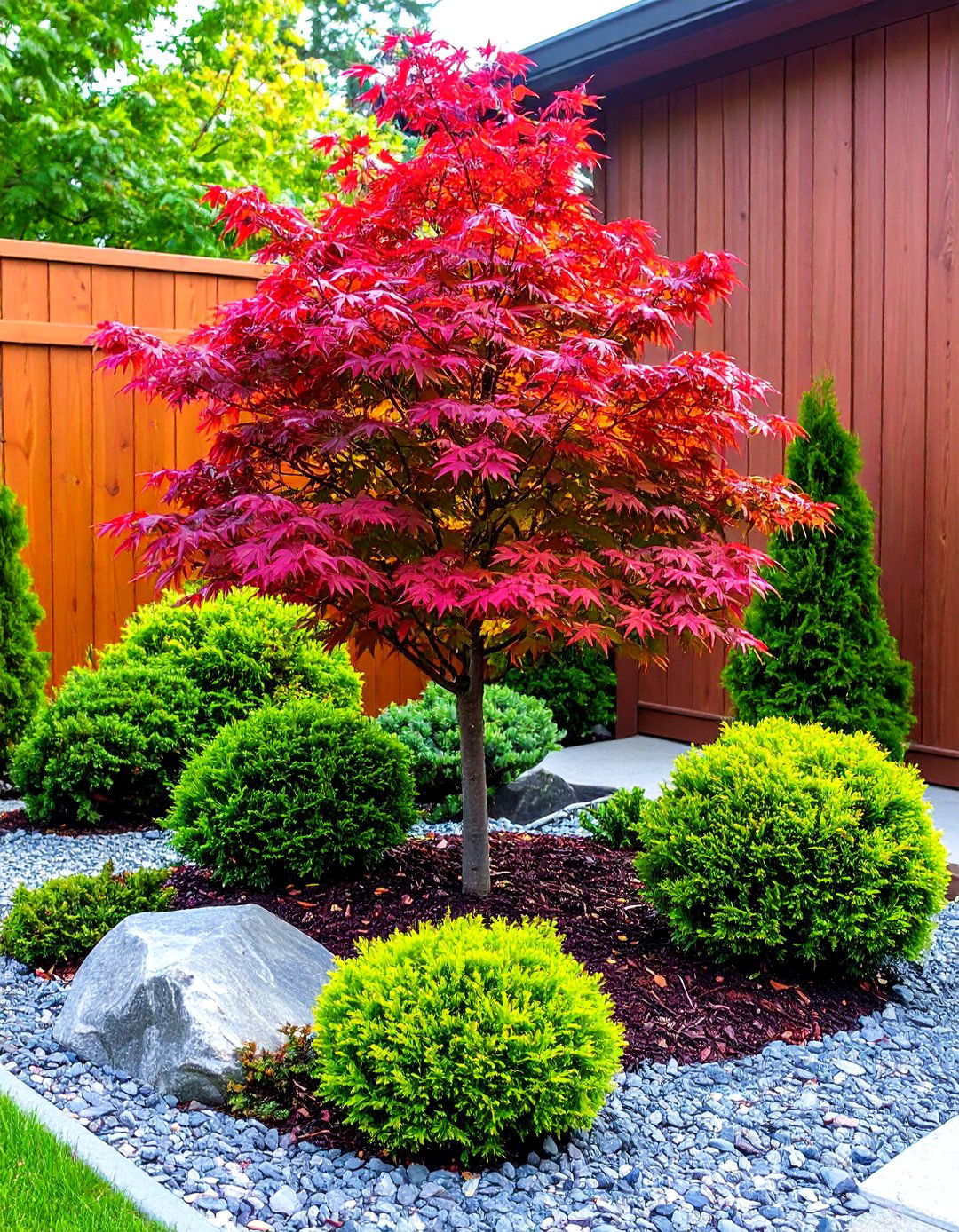
Select small-scale trees such as dwarf Japanese maple, pagoda dogwood, or Merlot redbud to add vertical interest without overshadowing the yard. Companion dwarf shrubs—like dwarf Alberta spruce or Sargent crabapple—provide structure and seasonal color while maintaining proportional harmony.
15. Hanging Baskets and Window Boxes
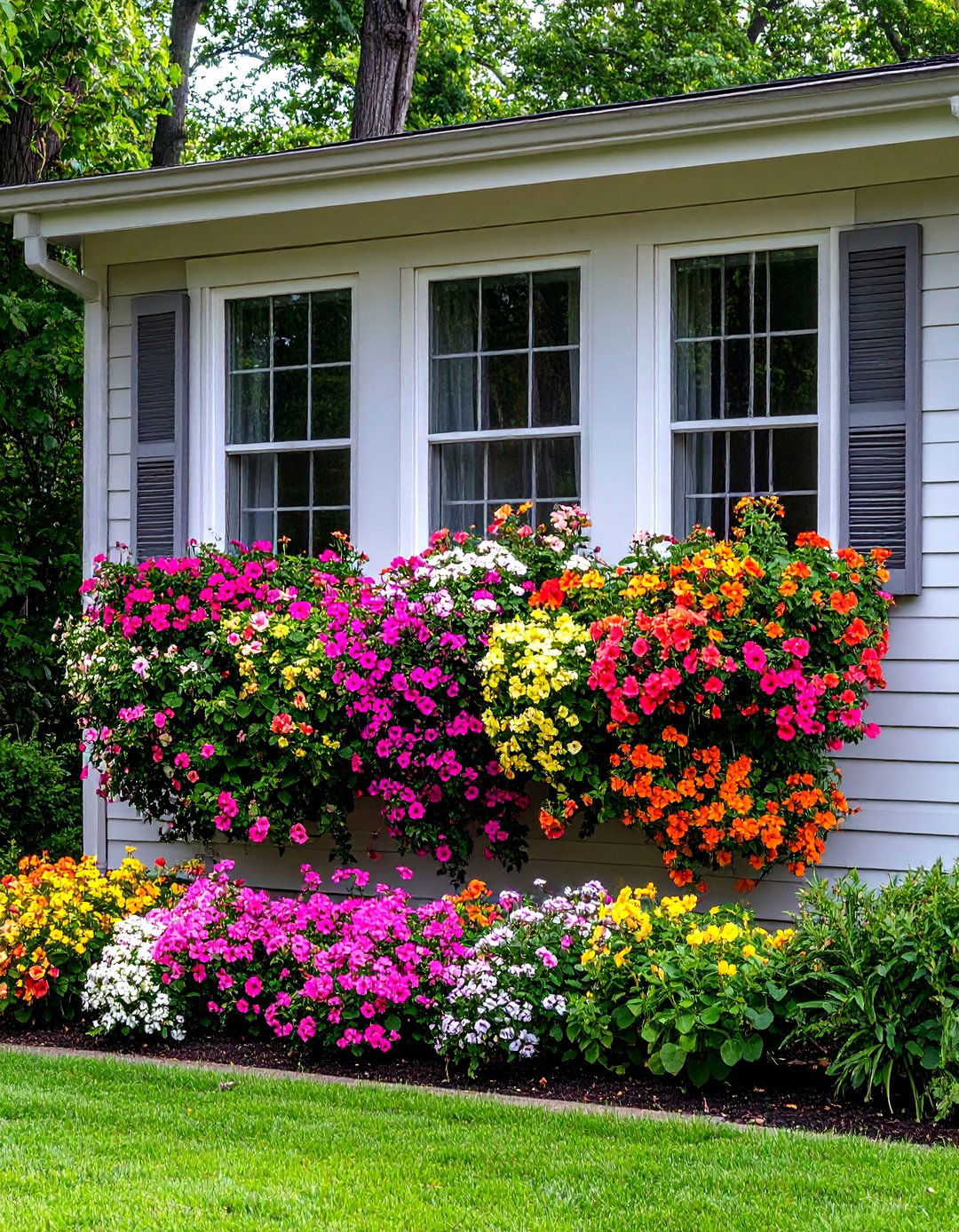
Mount hanging baskets or window boxes on eaves or railings to introduce seasonal blooms and lush foliage above ground level. Flowering annuals like petunias, begonias, and fuchsia spill gracefully over containers, maximizing plantings in limited footprints.
16. Textural Plant Layering
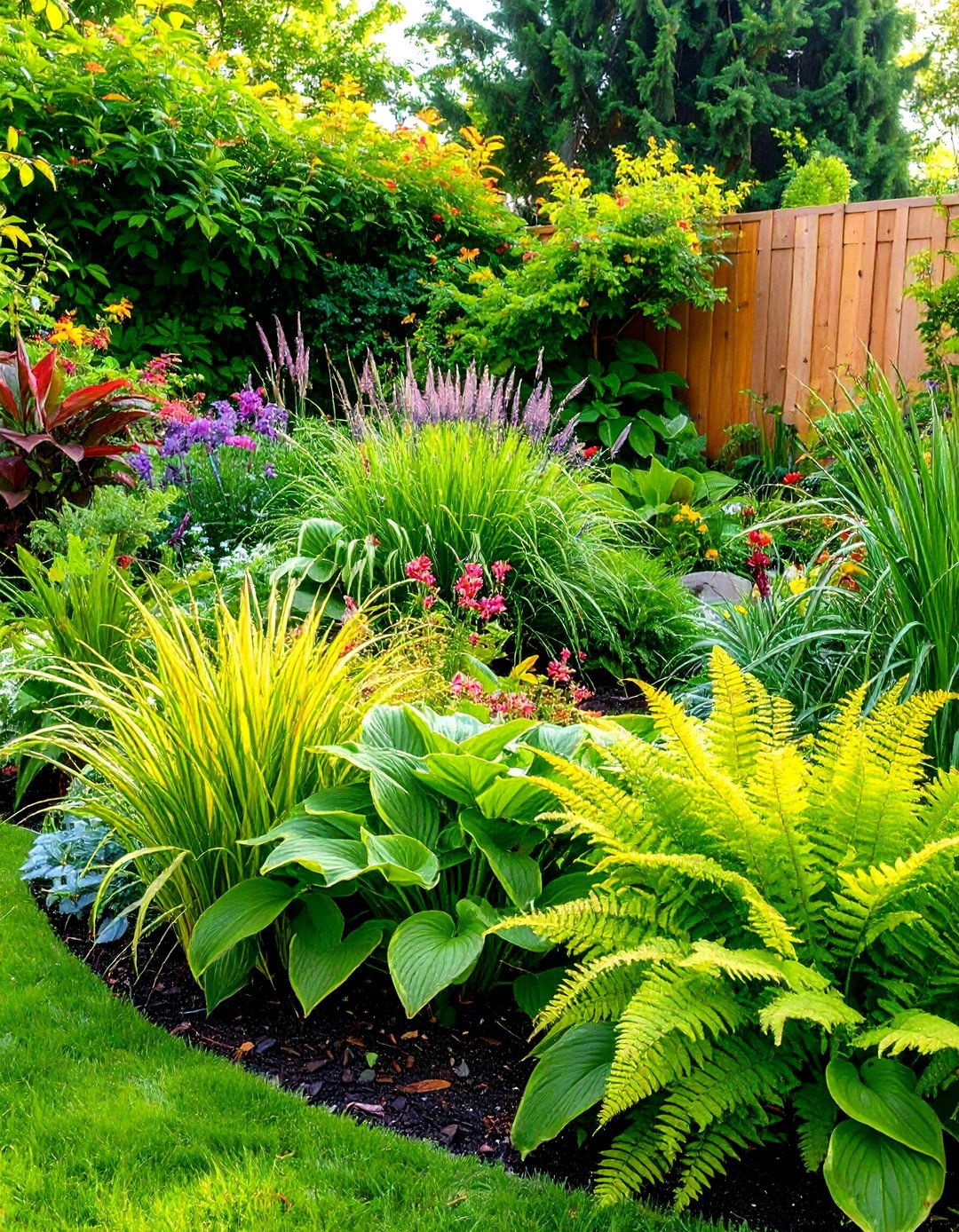
Combine ornamental grasses, hostas, ferns, and variegated foliage to create a tapestry of textures. Layer taller grasses behind lower groundcovers to add depth. Textural contrast between spiky grasses and soft hosta leaves creates a dynamic, garden-filled look even in small plots.
17. Patterned Entryway Pavers
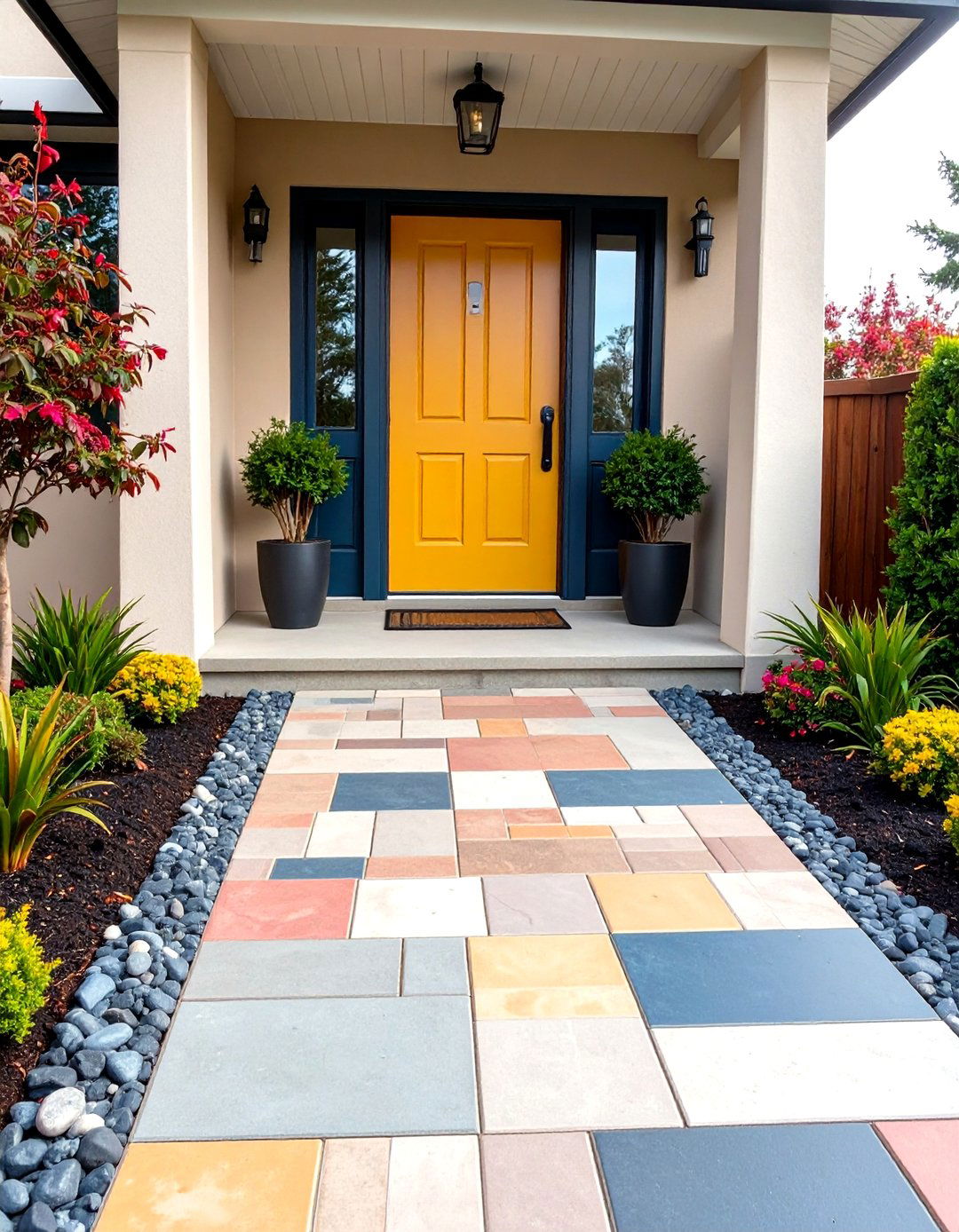
Use patterned tiles or colored concrete pavers at the doorstep to define the entrance and express personal style. Geometric, Moroccan-inspired, or encaustic tile insets break up monotony and elevate curb appeal. A small decorative patio in front of the door can also serve as a staging area for planters.
18. DIY Planters and Garden Art
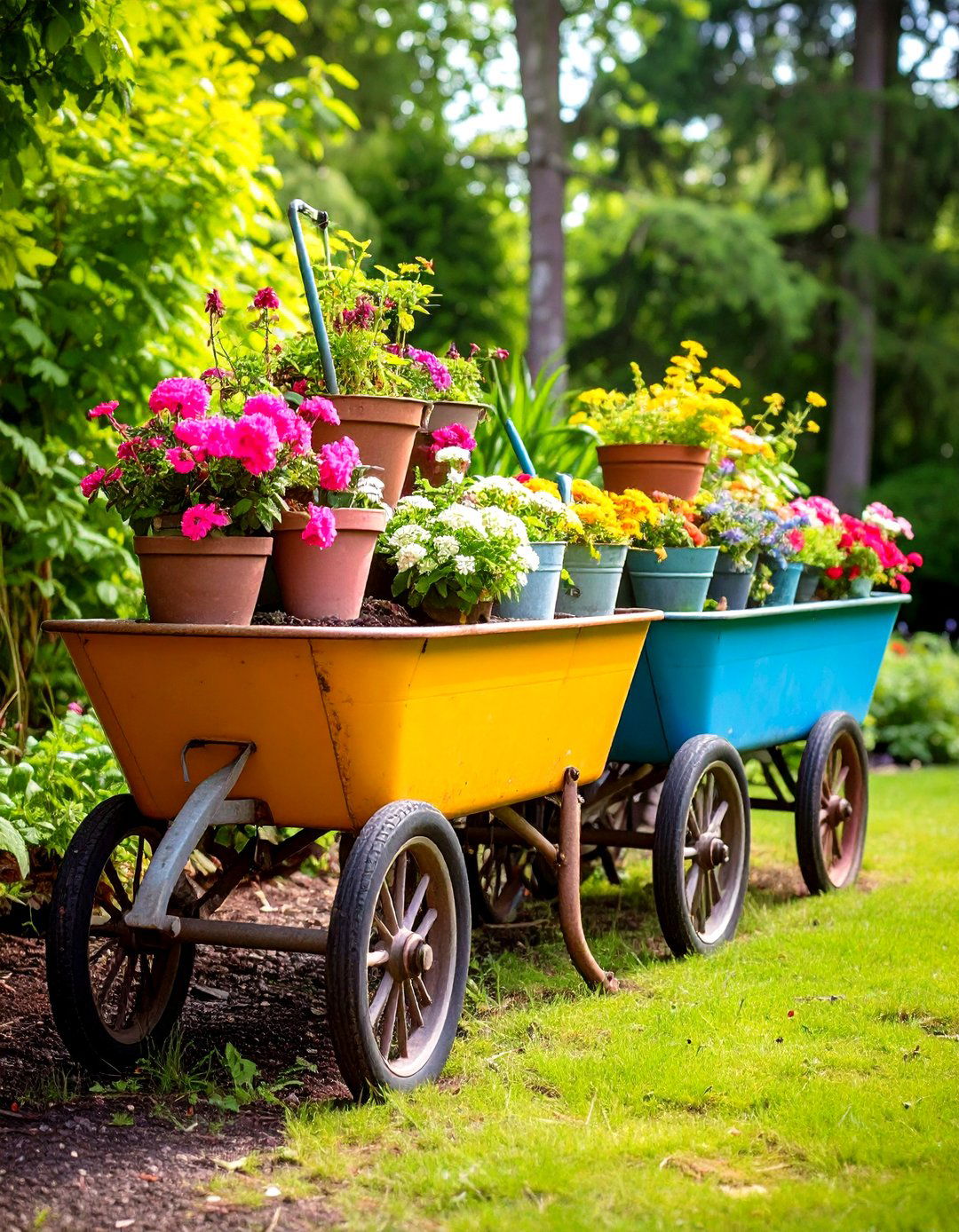
Create unique planters from repurposed materials—old wheelbarrows, wooden crates, or metal buckets—and display handmade garden sculptures or painted rocks. Personal touches and upcycled elements add charm and character without the cost of store-bought décor.
19. Mulch Beds with Groundcover
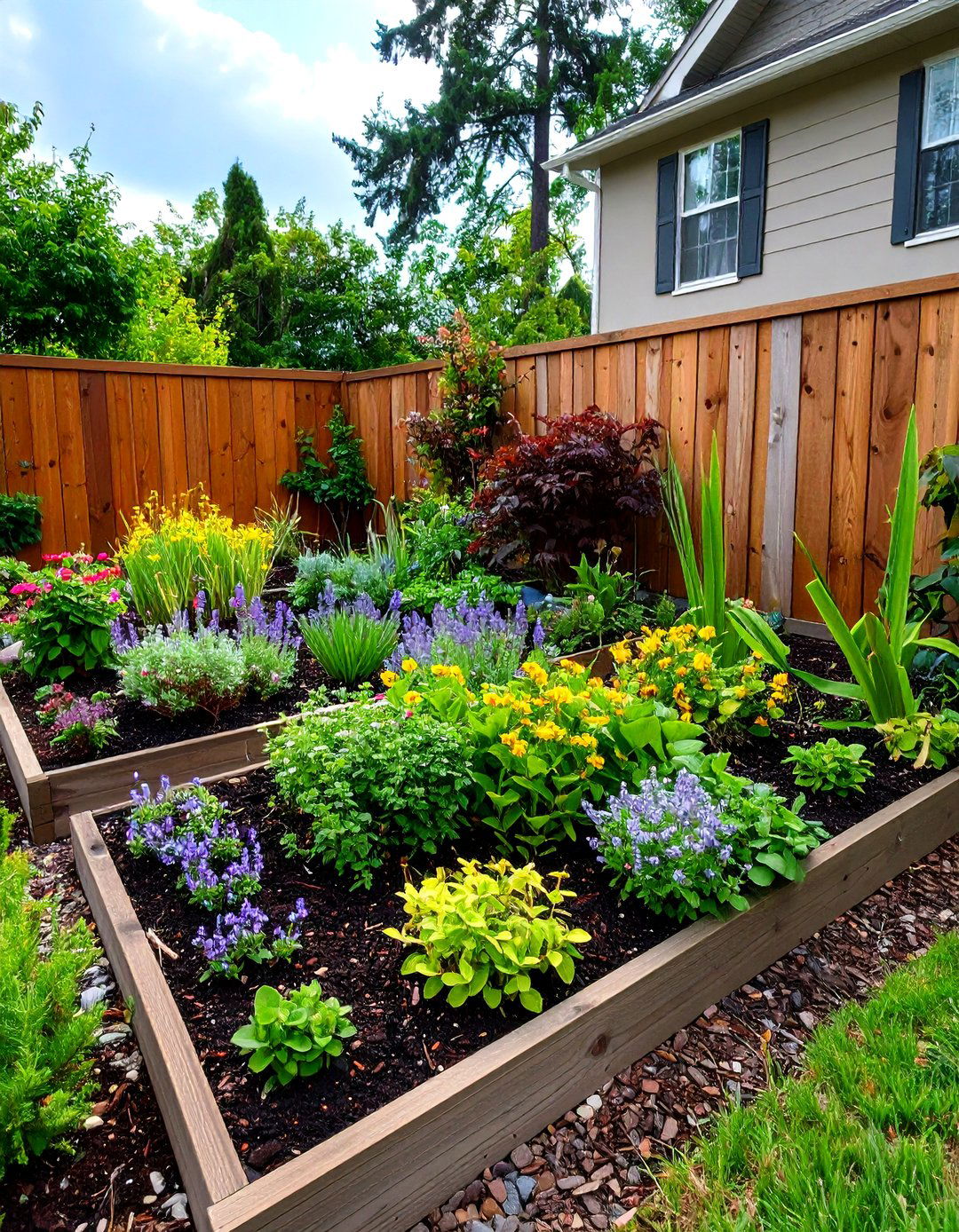
Install wide mulch beds around foundations and pathways, filling them with low-growing groundcovers like creeping thyme, sweet woodruff, or ajuga. Mulch conserves moisture and enhances soil health, while groundcovers reduce bare spots and weed pressure.
20. Gravel Pathways and Stepping Stones

Design a gravel walkway interspersed with stepping stones to guide guests through your yard. Gravel provides excellent drainage and low maintenance, while pavers or natural stone create stable footing and visual interest. Edging the pathway with narrow planting strips of lavender or sedum adds fragrance and color.
Conclusion:
Maximizing a small front yard’s potential hinges on combining creativity with strategic design. By incorporating container plantings, vertical elements, water features, and low-maintenance groundcovers, you can craft a garden that feels larger and more inviting. Thoughtful use of materials—such as pavers, mulch, and decorative rocks—paired with carefully selected plant textures and lighting, transforms compact spaces into charming outdoor rooms. Whether you prefer a minimalist, cottage, or modern aesthetic, these 20 ideas offer adaptable solutions to enhance curb appeal, functionality, and personal expression in any small front yard.


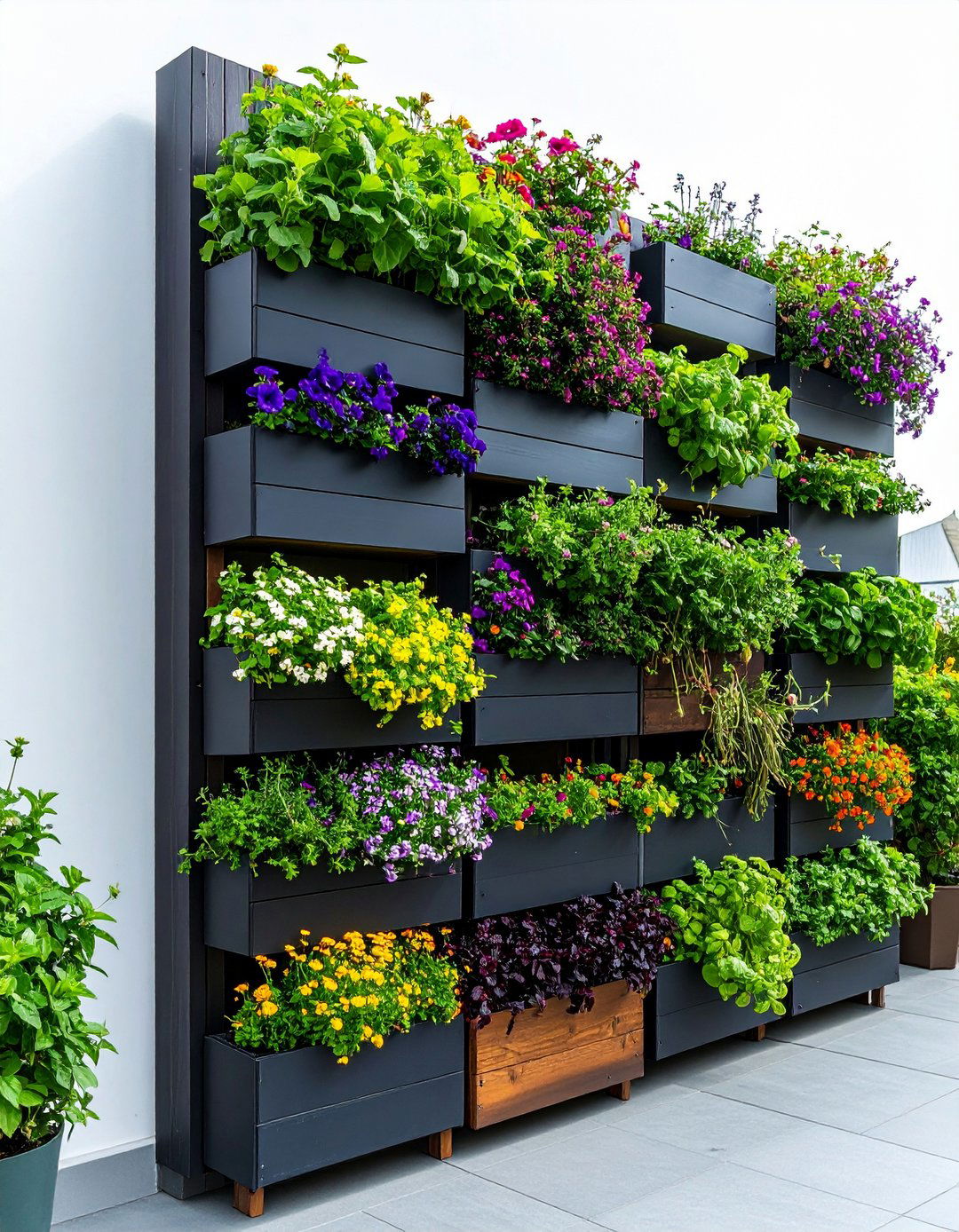
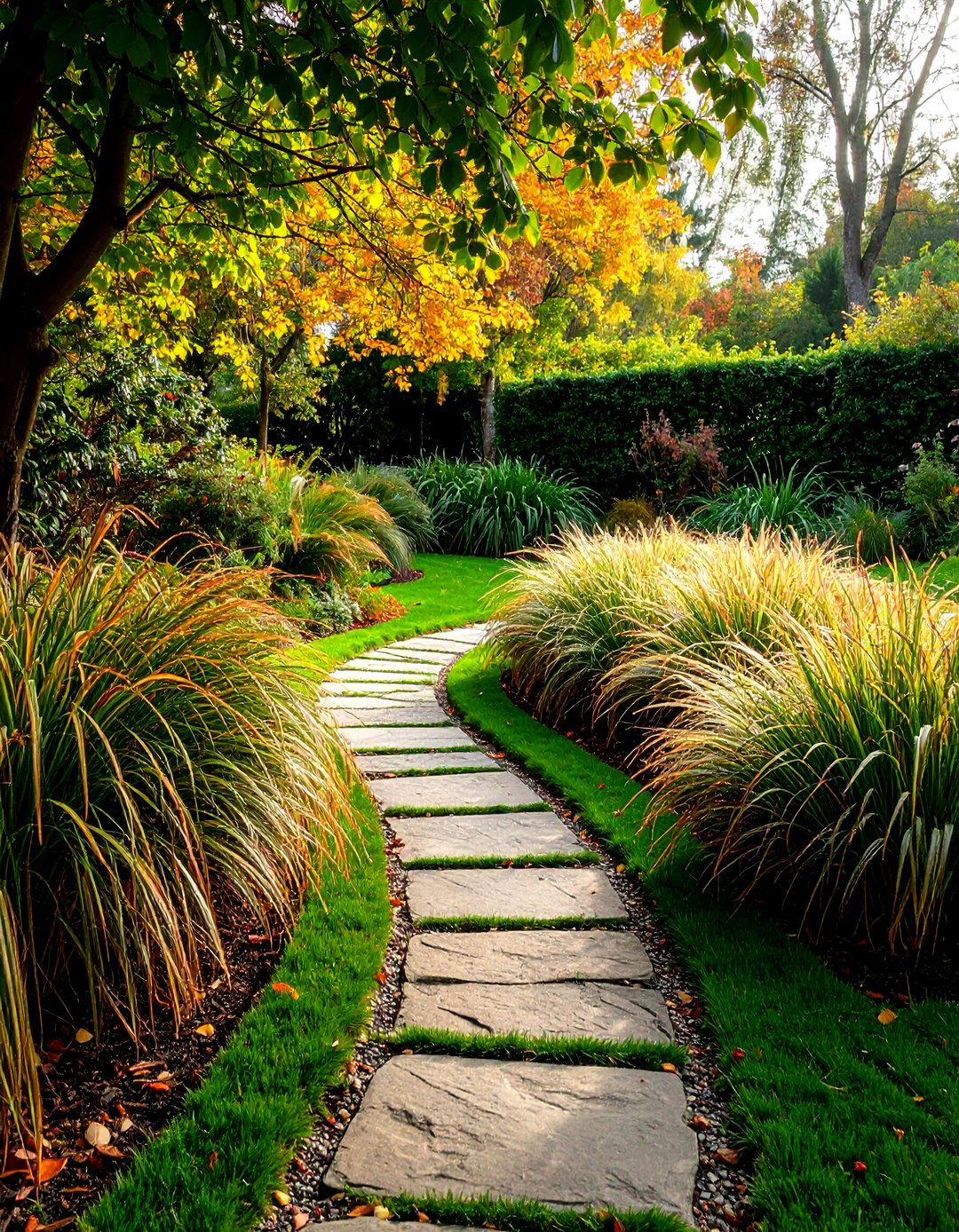

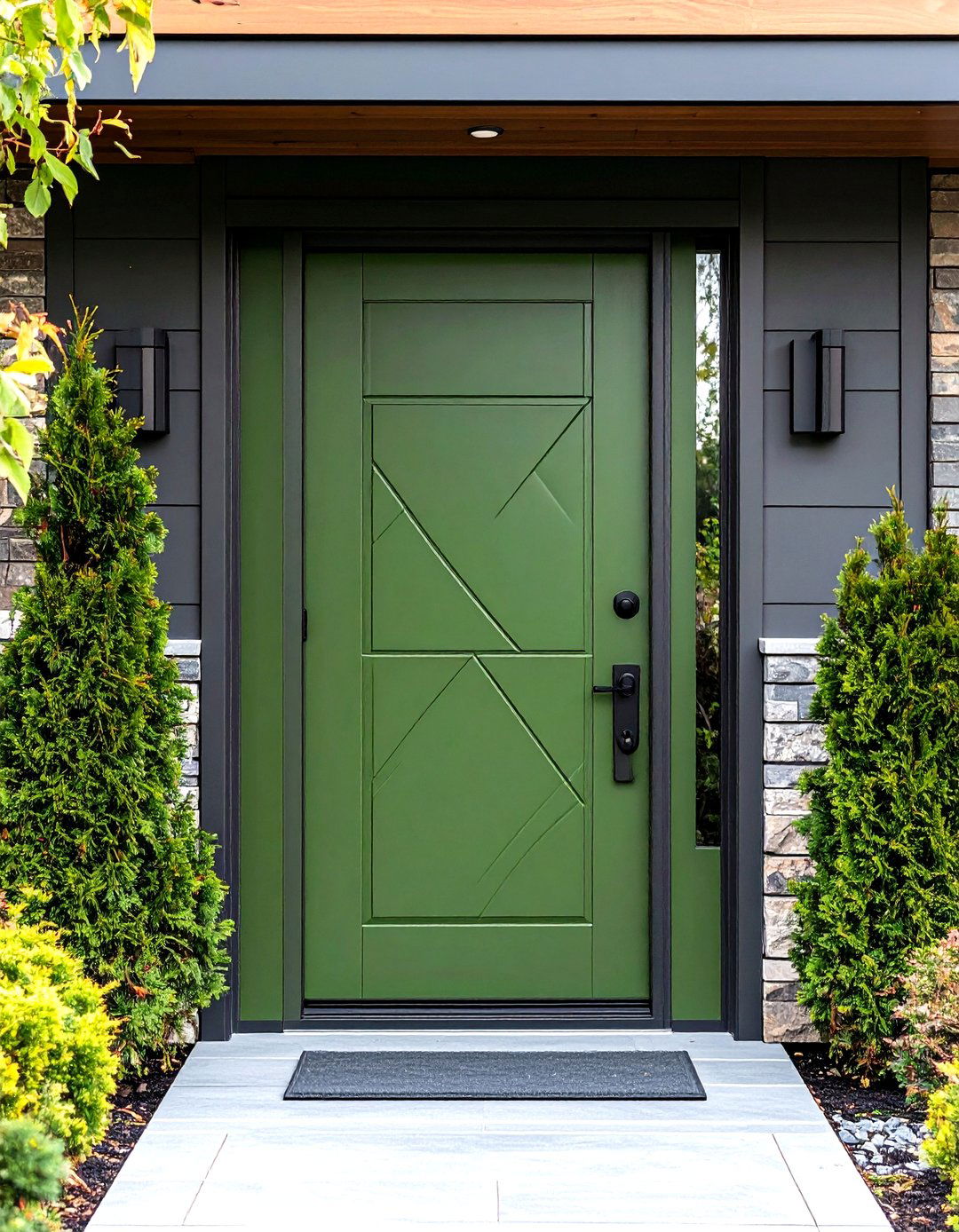
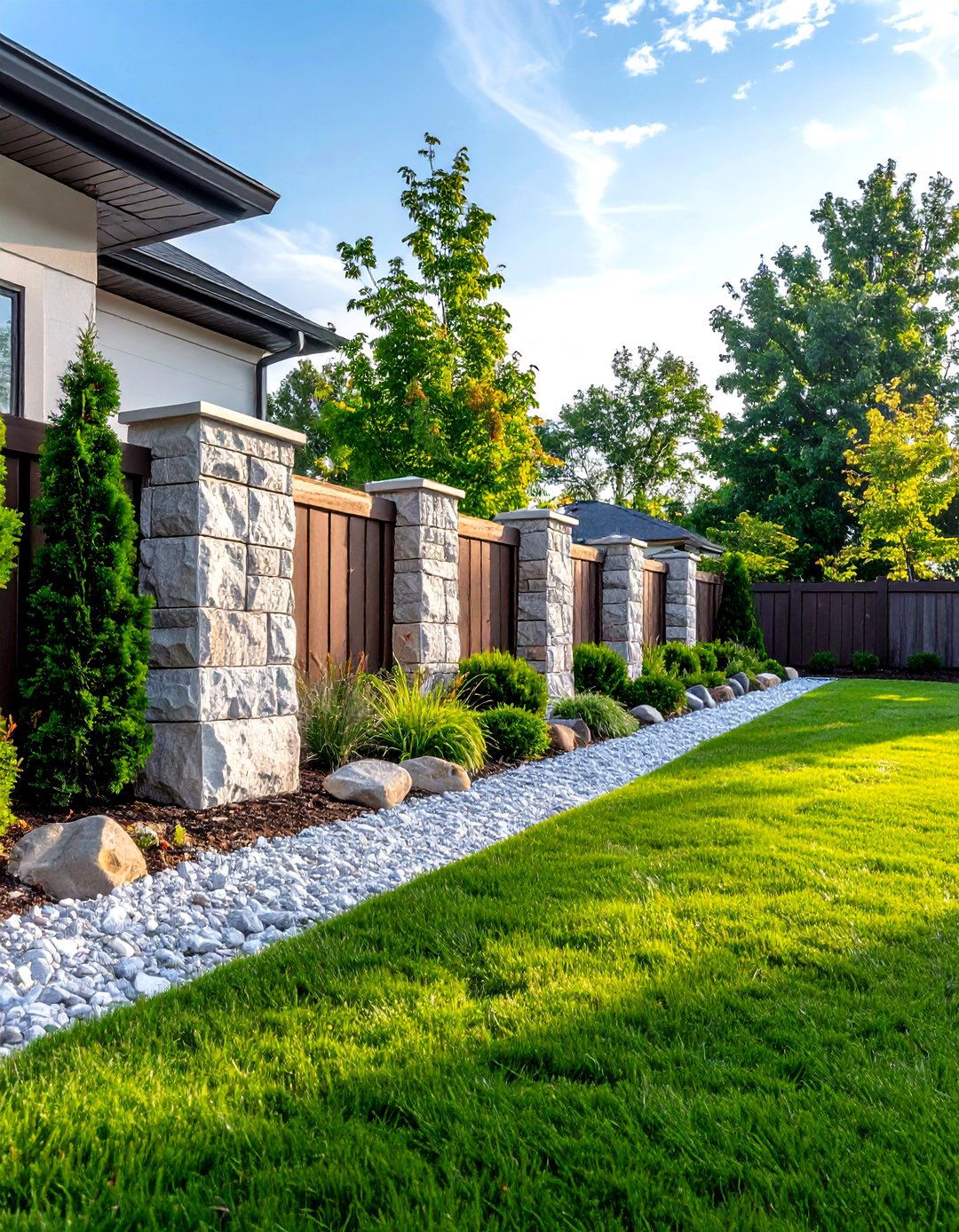
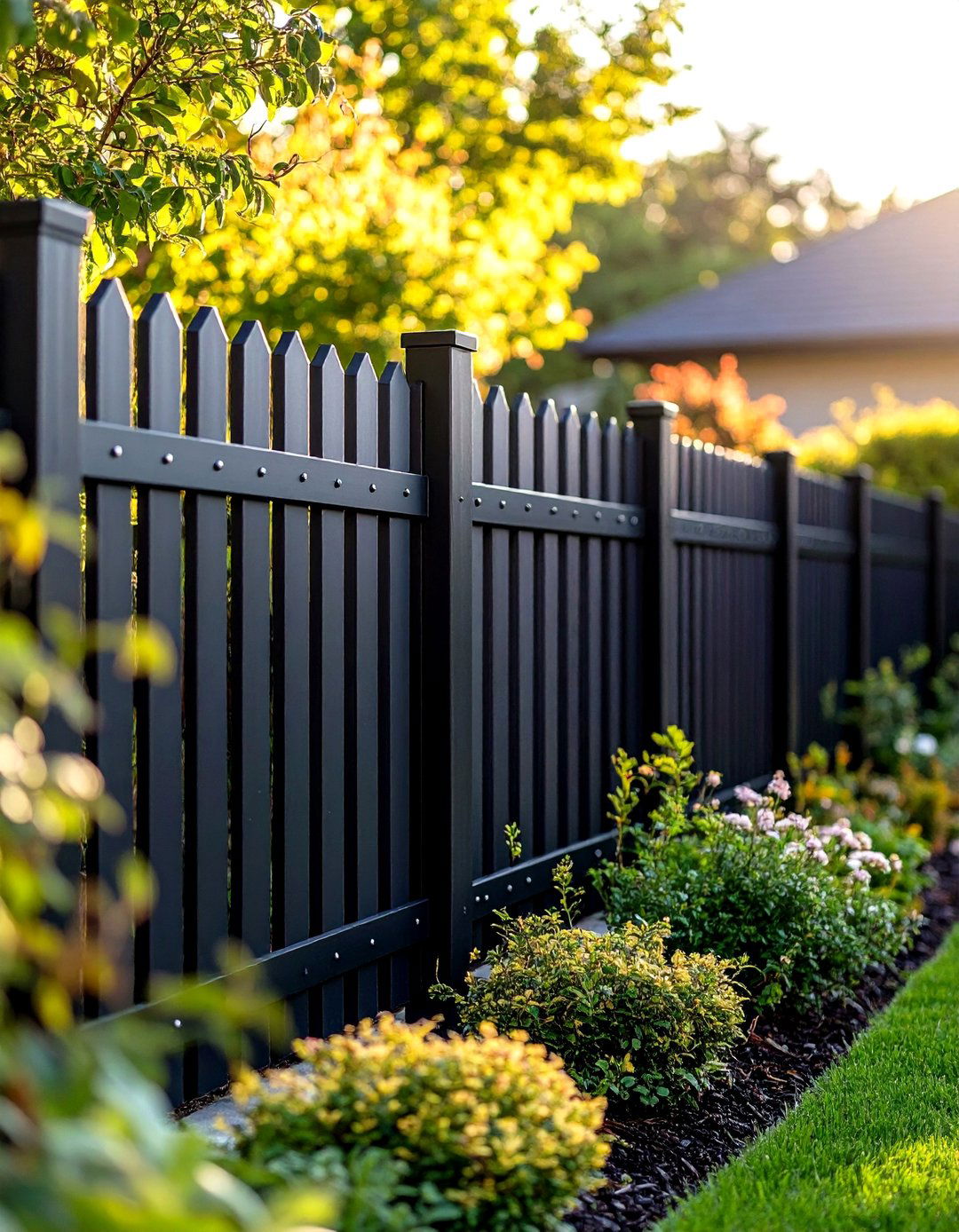
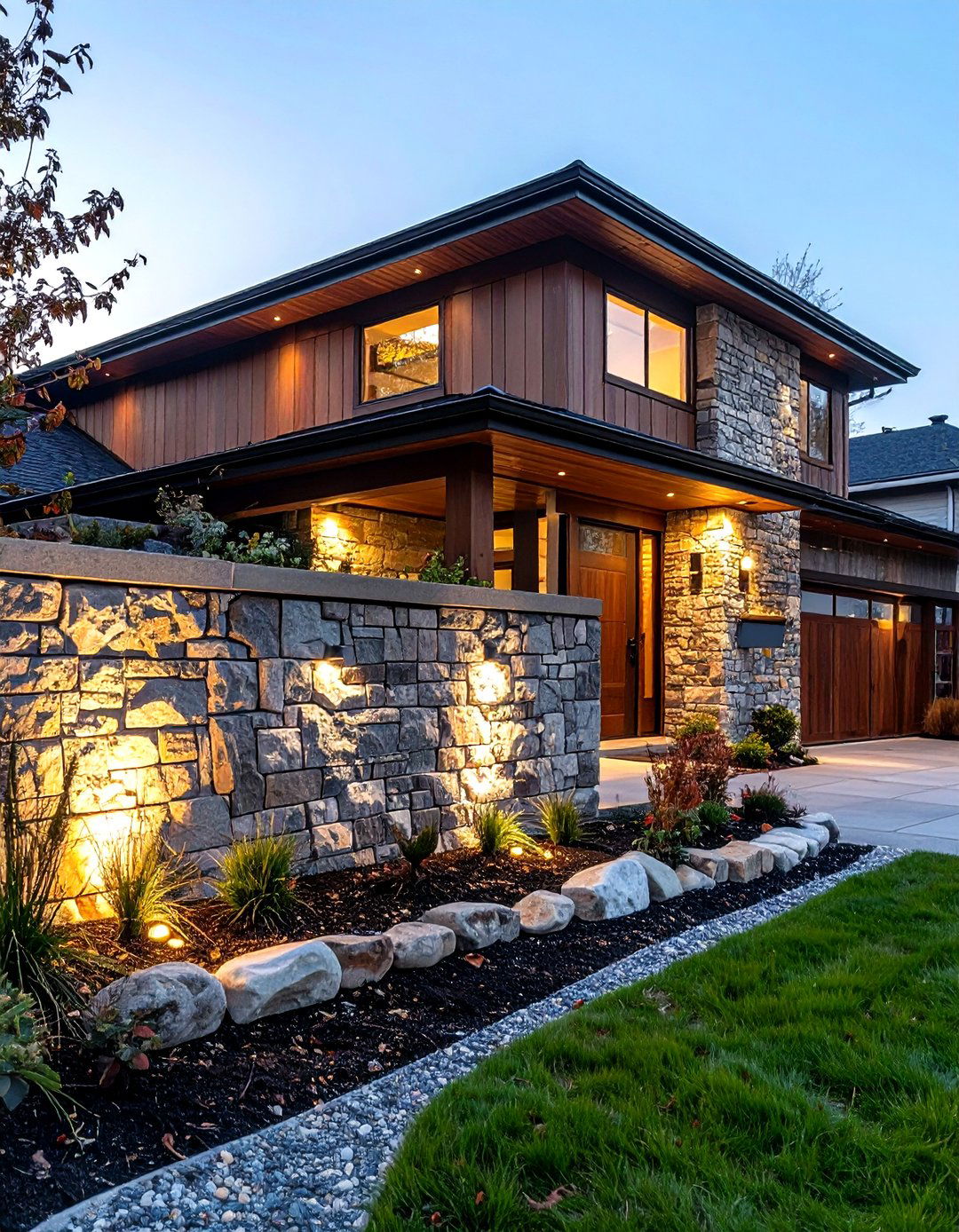
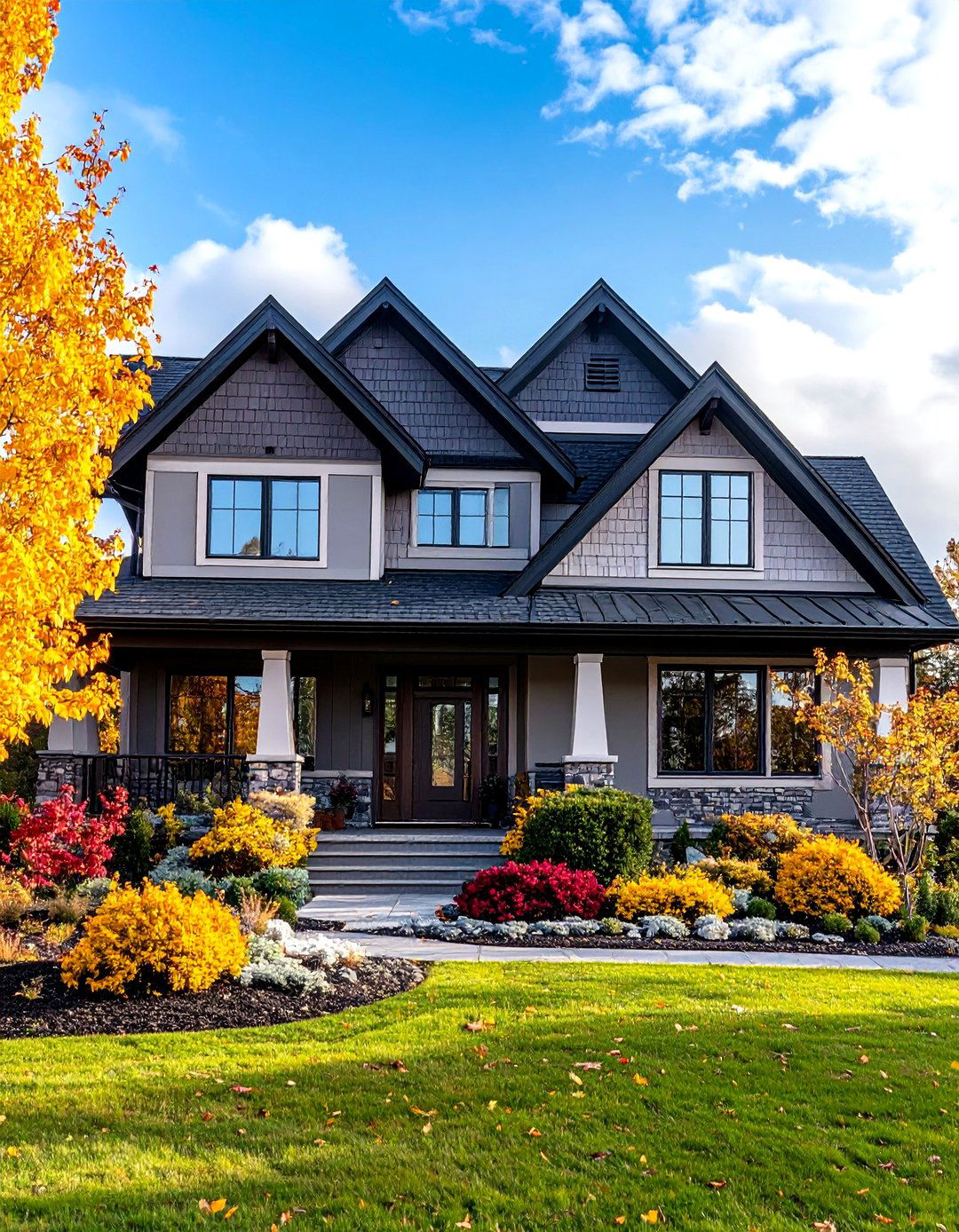
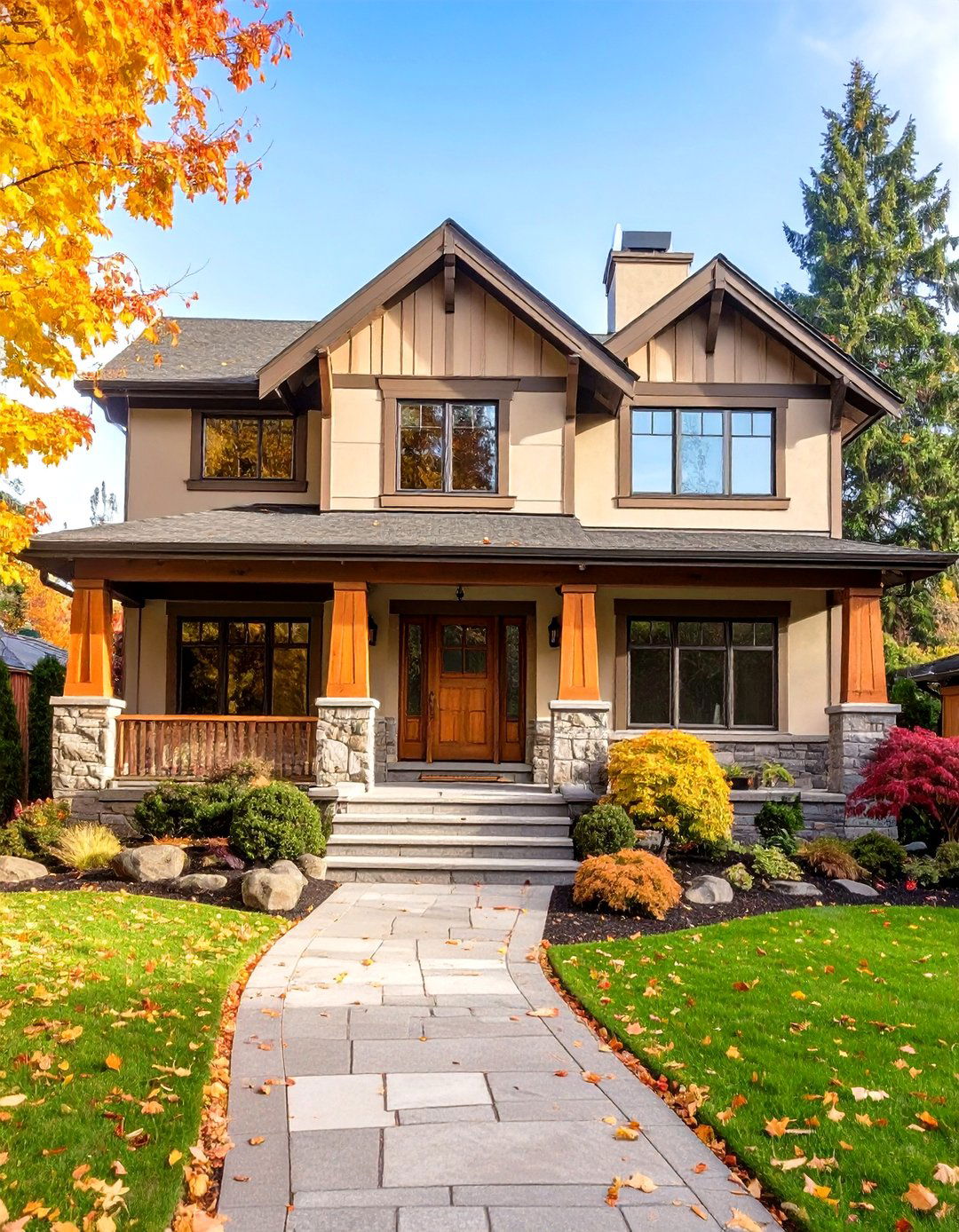
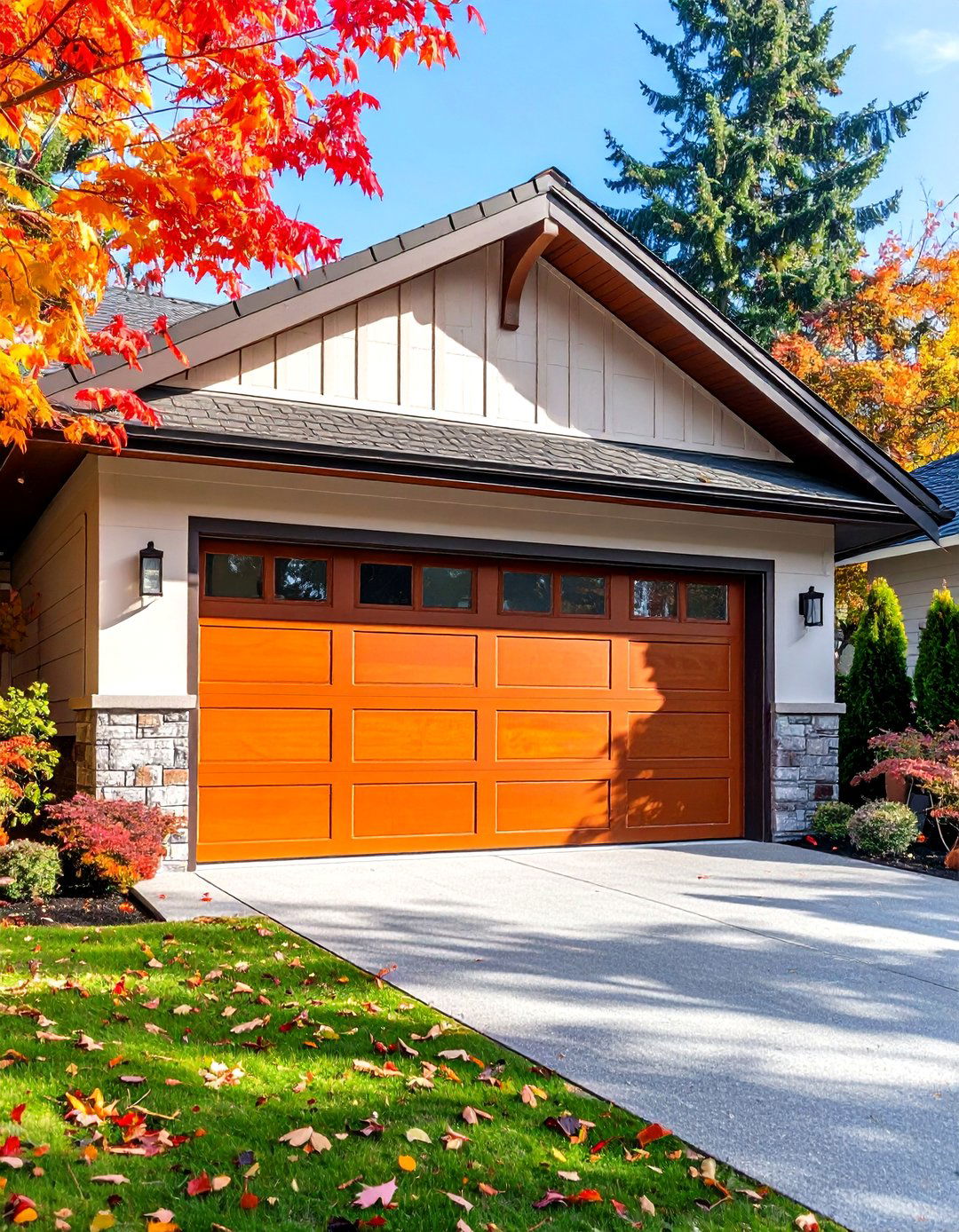
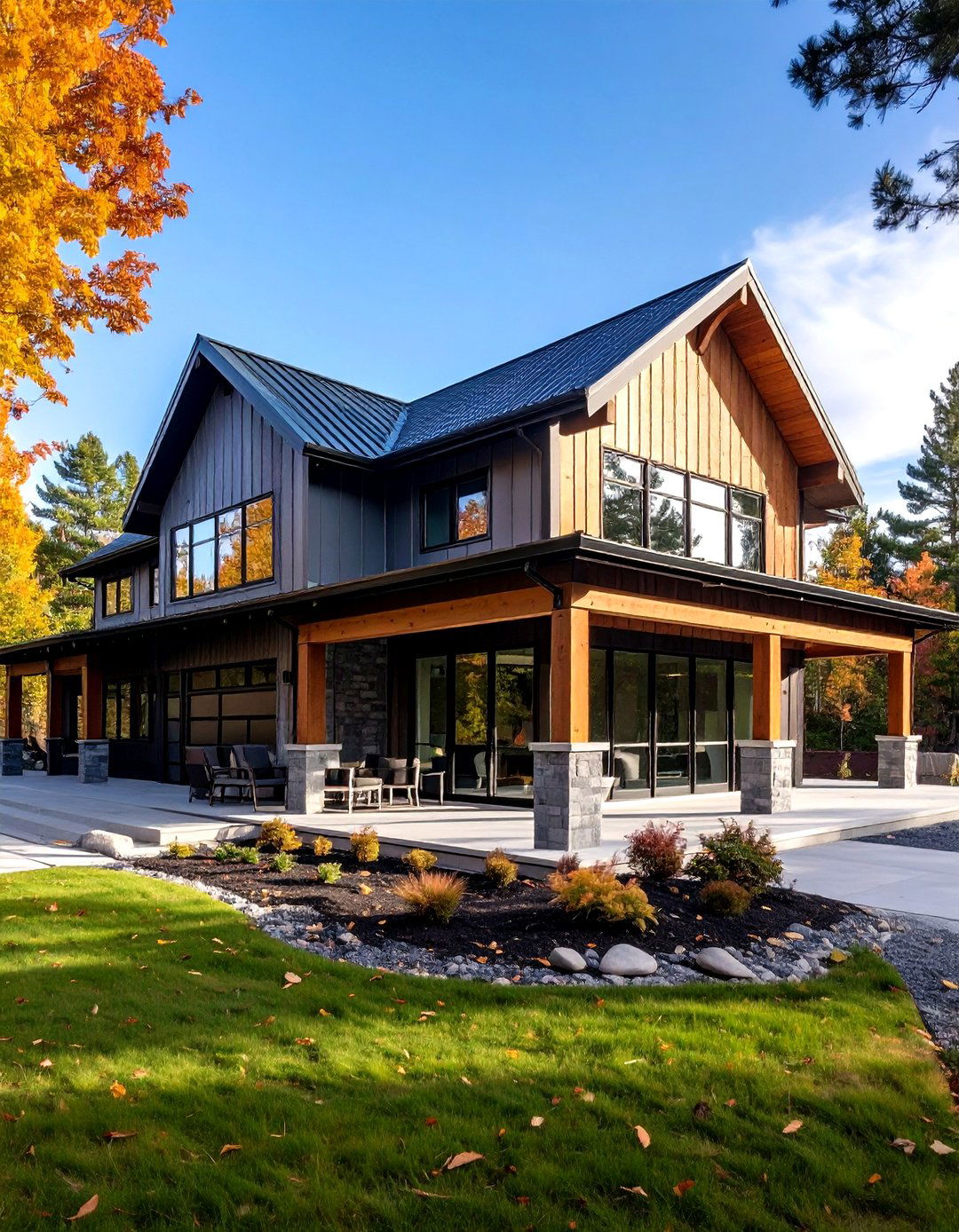
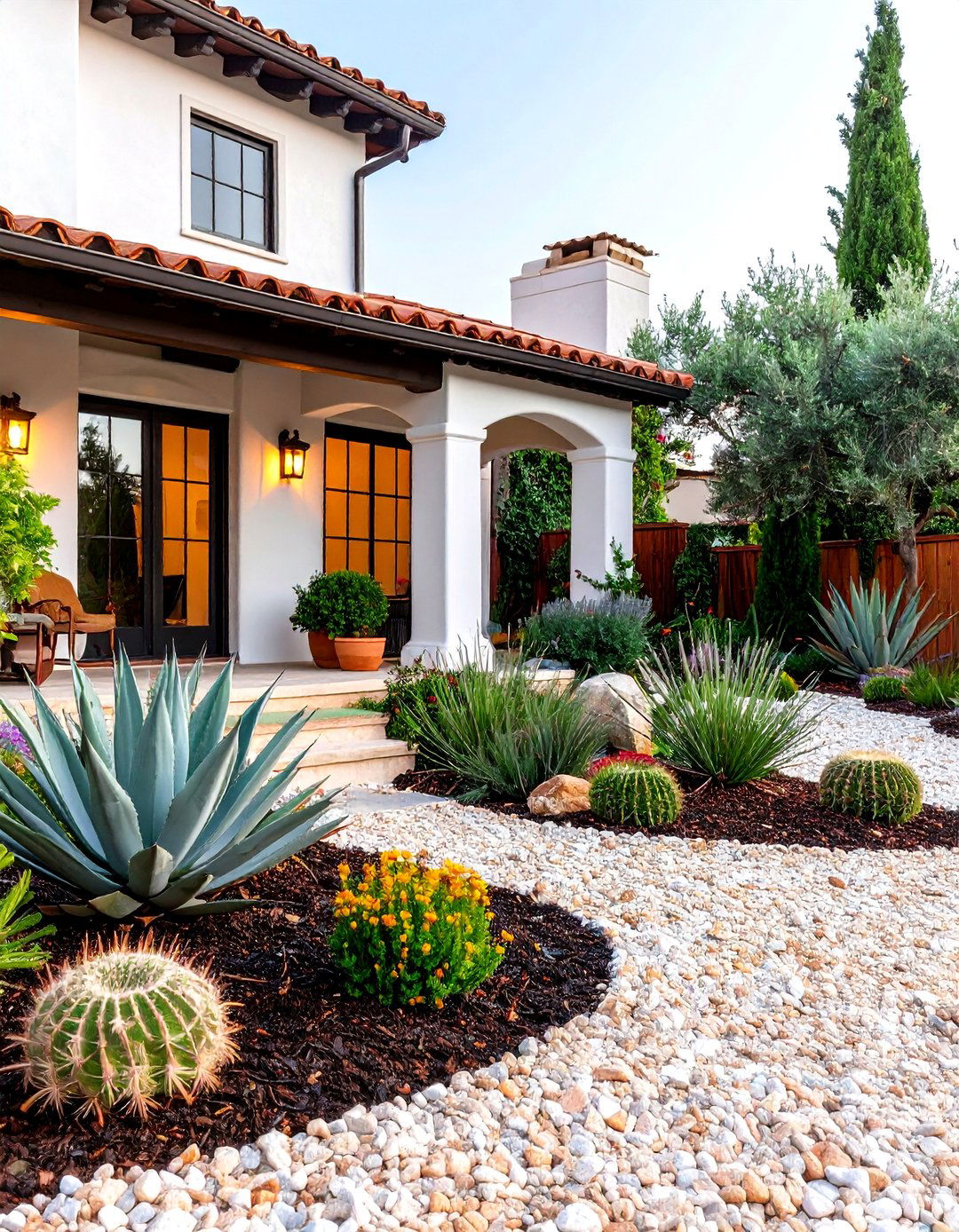
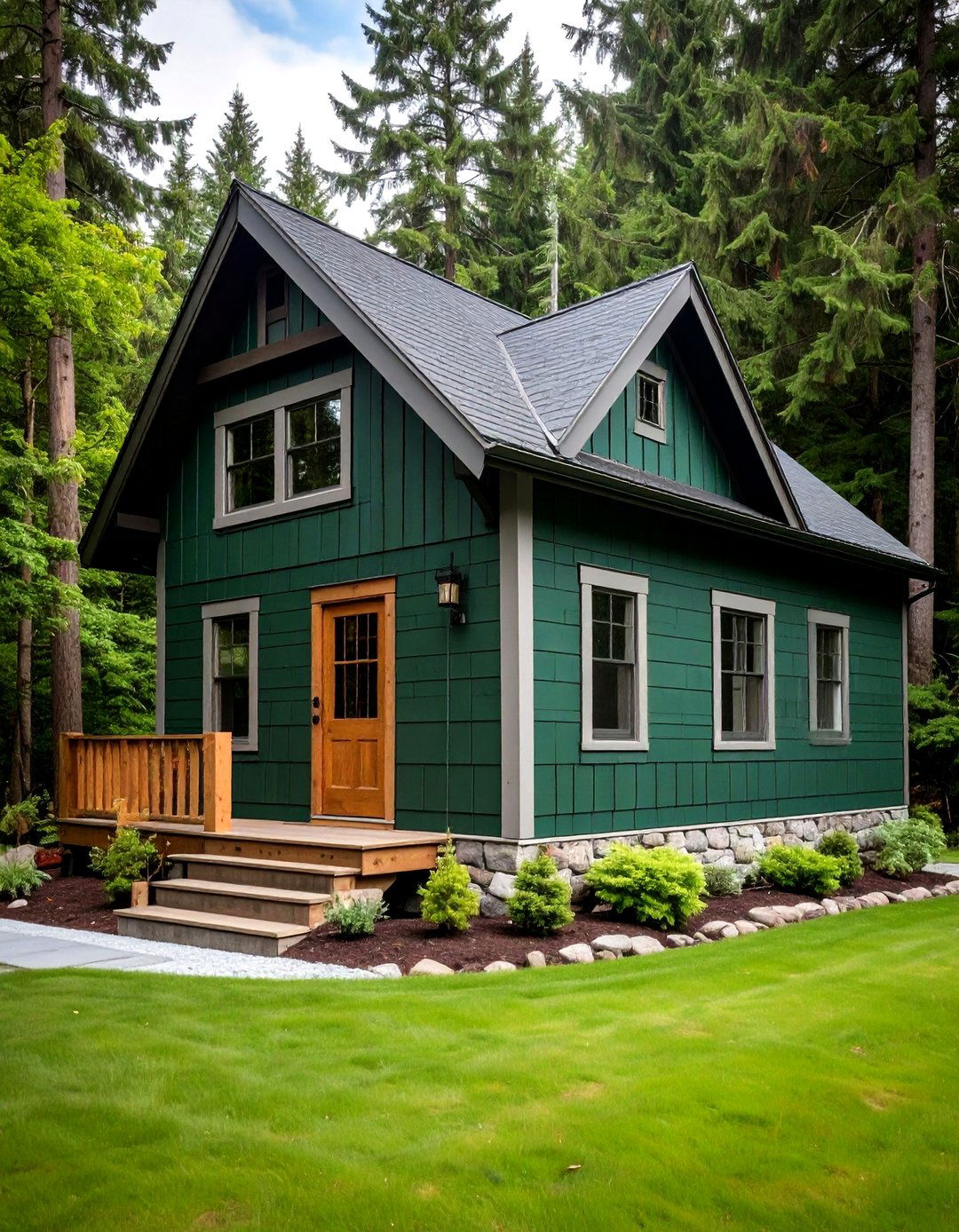
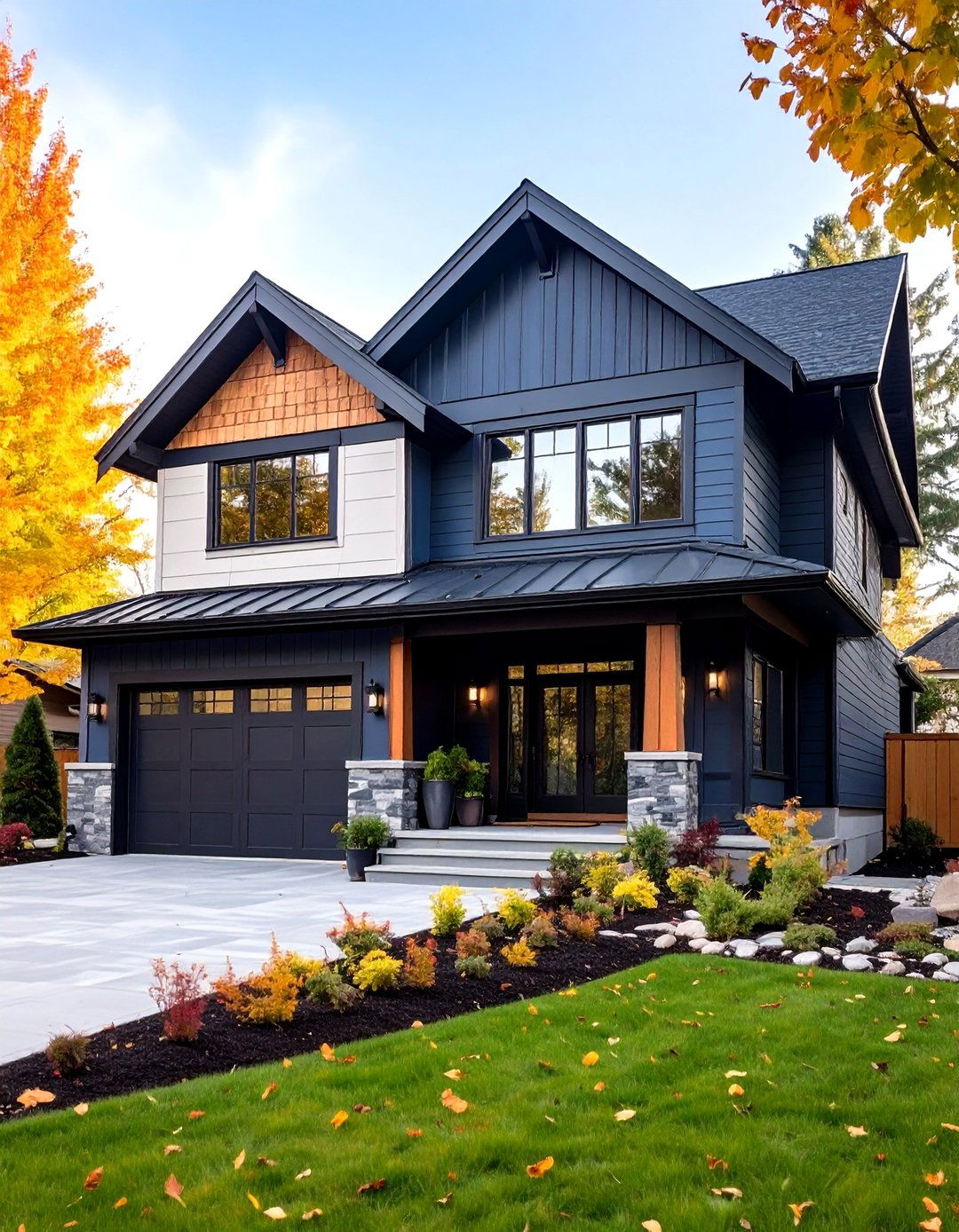
Leave a Reply